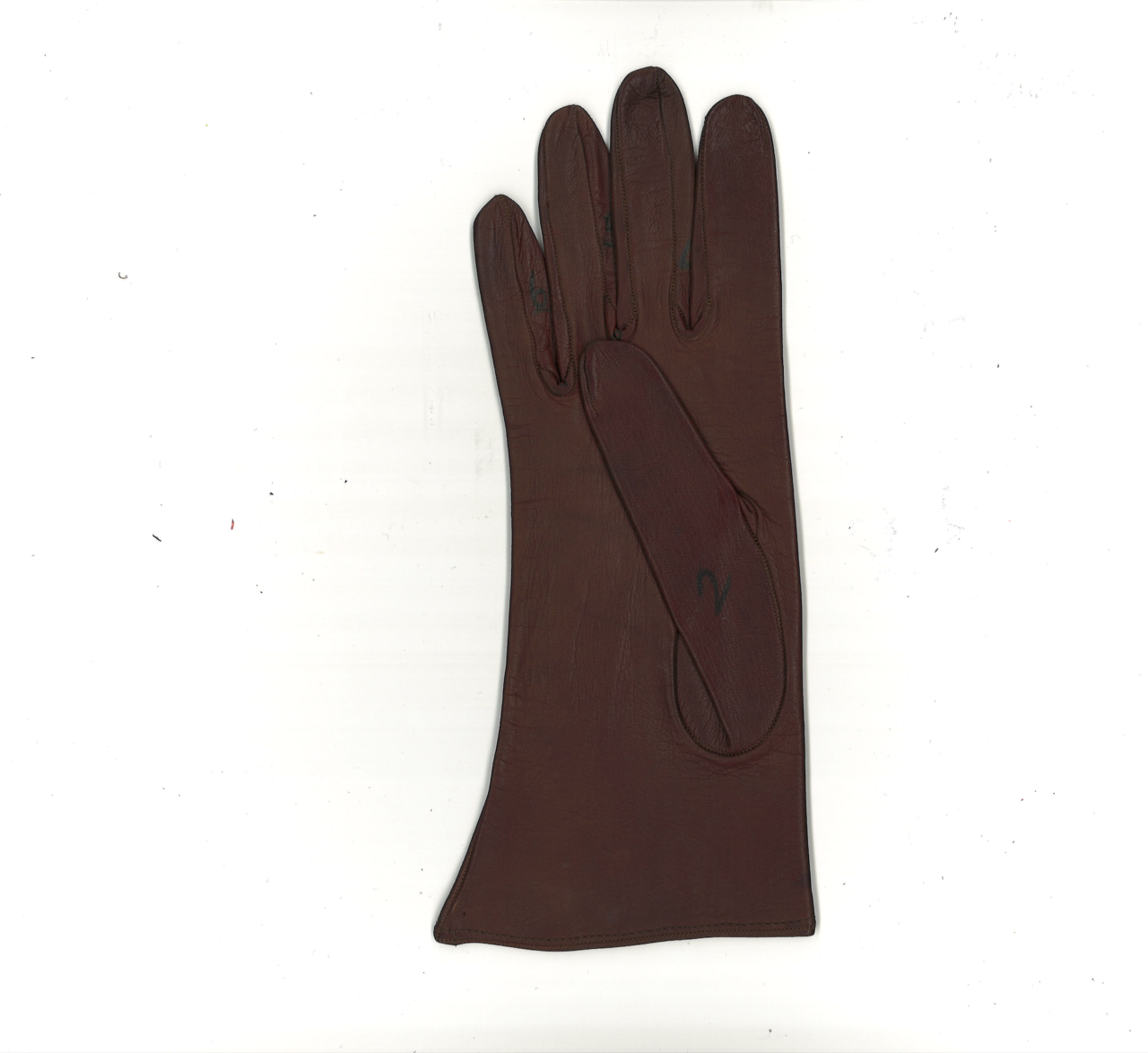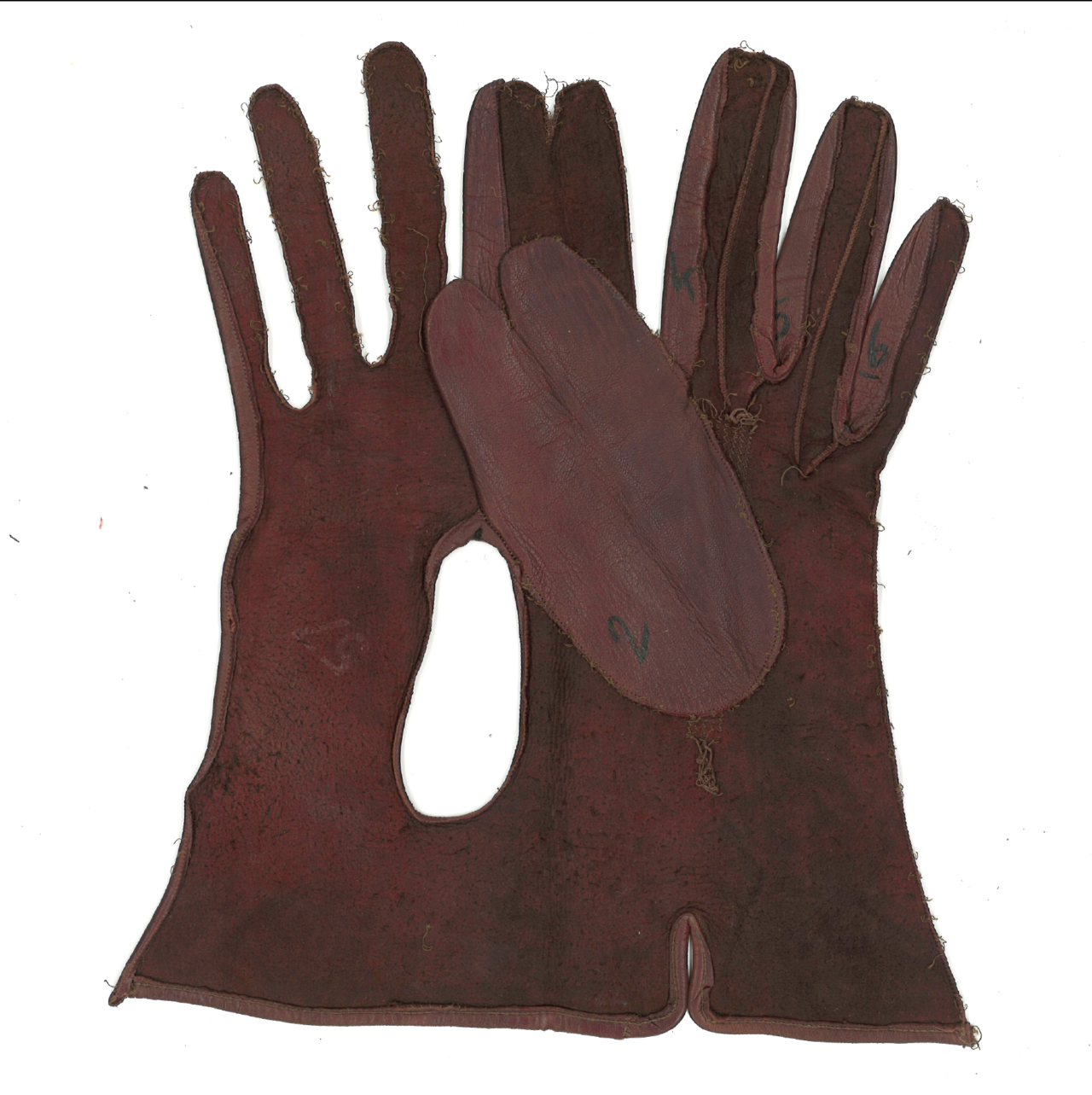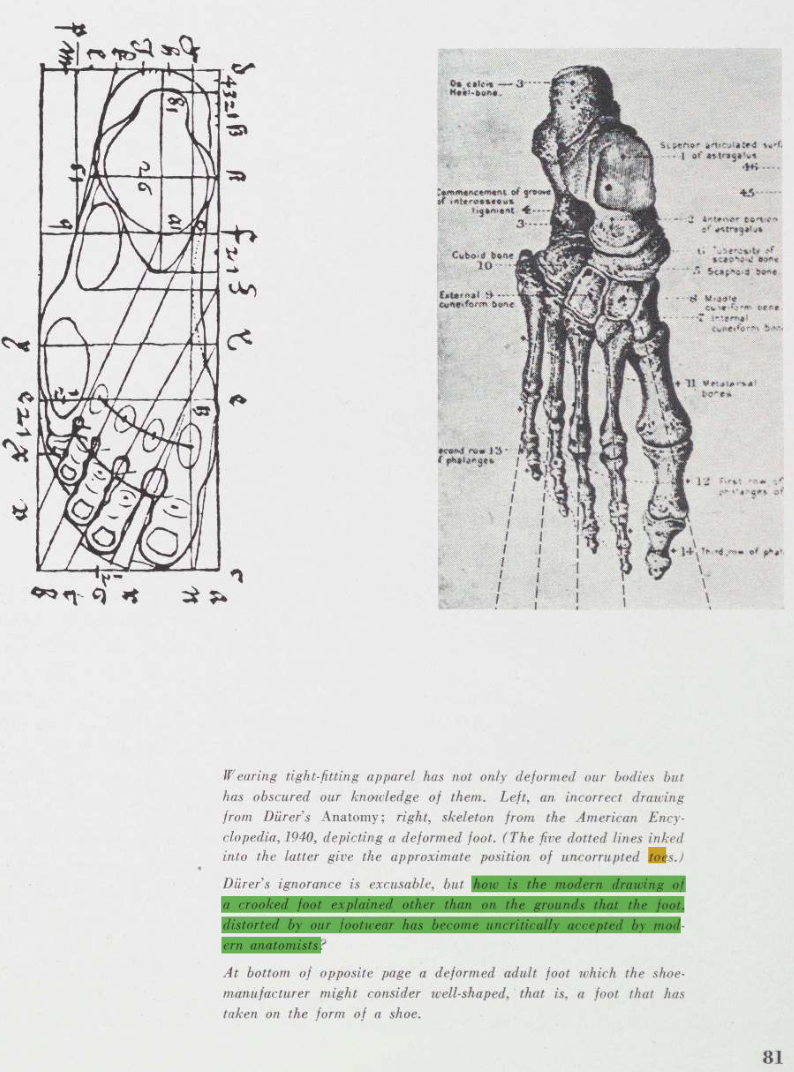Dressing the Body

Why is it that clothing created for our bodies is based on flat shapes (‘patterns’) rather than our physical bodies? In ‘Dressing the Body’ I’m developing clothing using a method of patternmaking which takes the concrete body as its foundation, rather than its abstraction in pattern. This resulted in a series of garments directly based on real people.

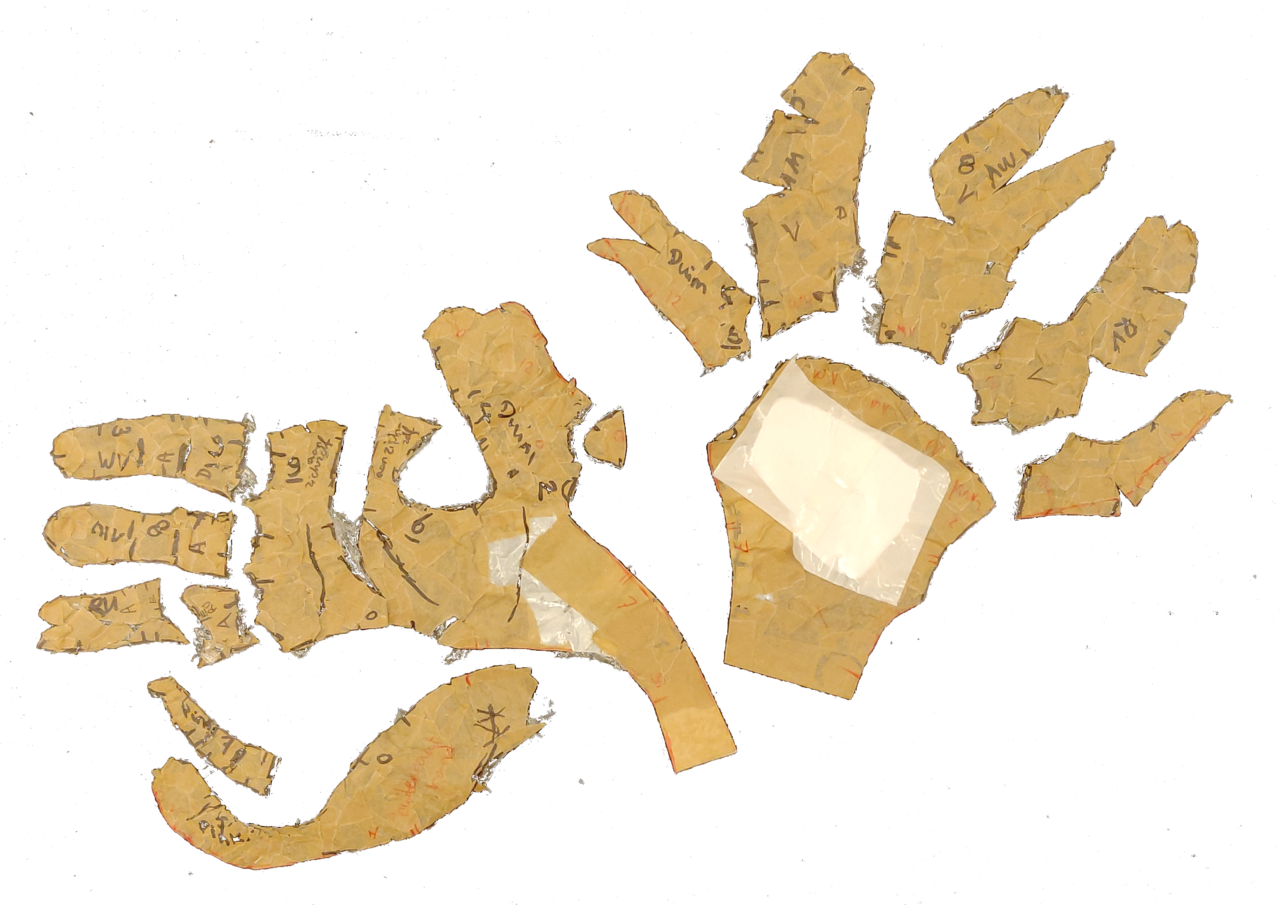
A glove
Autumn 2018 I bought a vintage pair of leather gloves at the Rotterdam flea market. Something about the way they were made struck me; they were constructed of many different panels which were made to fold around and into the different slopes and creases of the wearers hand. As a result of this construction the glove rather realistically mimicked a human hand. I decided to take the glove apart and while she ripped open one seam after the other I saw before me the unfolding of this human shape. I could not sleep that night.
Pattern as abstracted body
The glove sparked a fascination with the way the human body is reflected in clothing. Most contemporary clothing is based on metric patterns: two dimensional abstractions of the living, breathing body. There is something eerie about this: the clothing we wear is not based on our actual bodies but on the abstraction of our bodies that is the pattern.
The invention of pattern as a template for the body
With the invention of the printing press came a quick development of a standardized system of patternmaking: the metric pattern system. In this system the body is abstracted into vertical and horizontal lines which form a grid from which a pattern is created. With the introduction of standardized patterns the body became less central in the creating of clothing. With no need for a body to be physically present, tailors started to become alienated from the body.

The Crafted Body
For any human culture known to us, individuals are required to ‘dress’ their bodies in one way or another before entering the social world. Since we experience our bodies in their clothed state, our understanding of our bodies will be shaped by the clothed body. Then, if our clothing is not based on our physical bodies but on a calculable approximation of the body, our understanding of our bodies will also be based on this abstraction.
In his 1947 essay ‘Are clothes modern’ Bernard Rudofsky discusses how the construction of shoes based on lasts pollutes our understanding of our feet. The image on the far-left is a drawing from Dürer’s Anatomy which shows an incorrect positioning of the toes.
Description of working and research method
By packing the body in tiny pieces of tape I am creating a mould. I cut this mould open in a specific way which allows me to ‘unfold the body’ like an orange peel. These shapes laid flat form the basic patterns from which I create specific garment types.
T-shirt
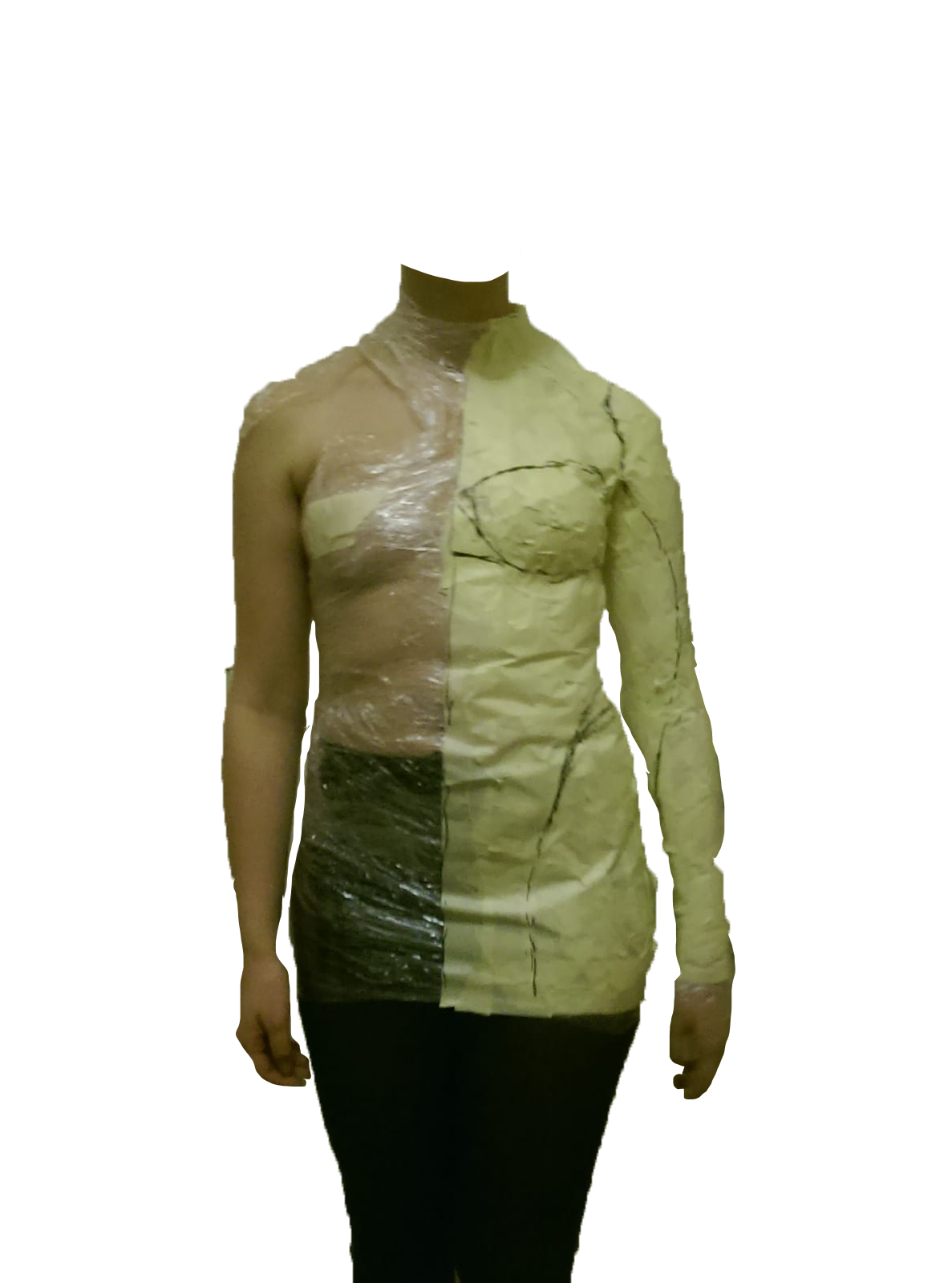
Taking a mould of the body 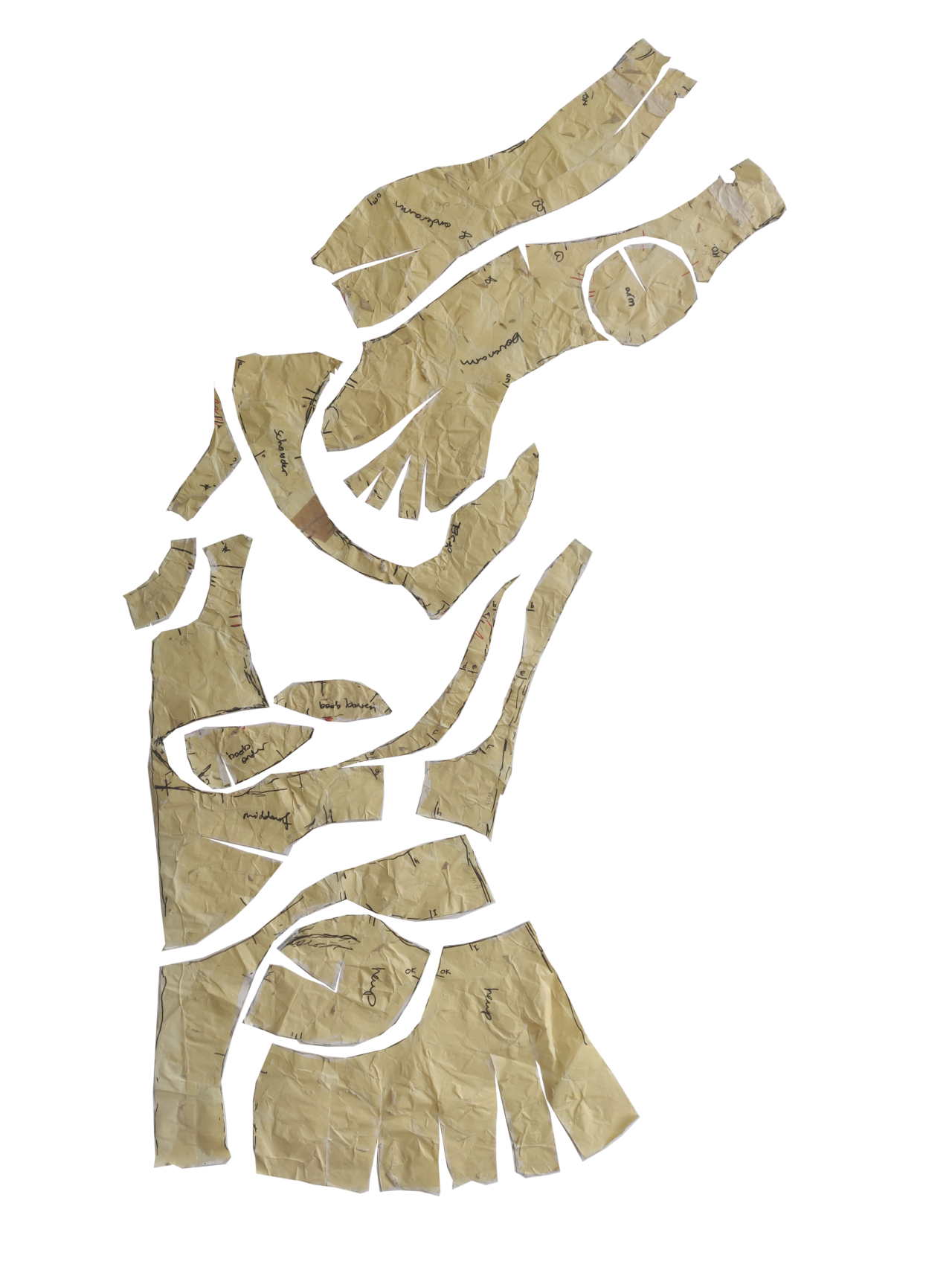
Unfolding the body 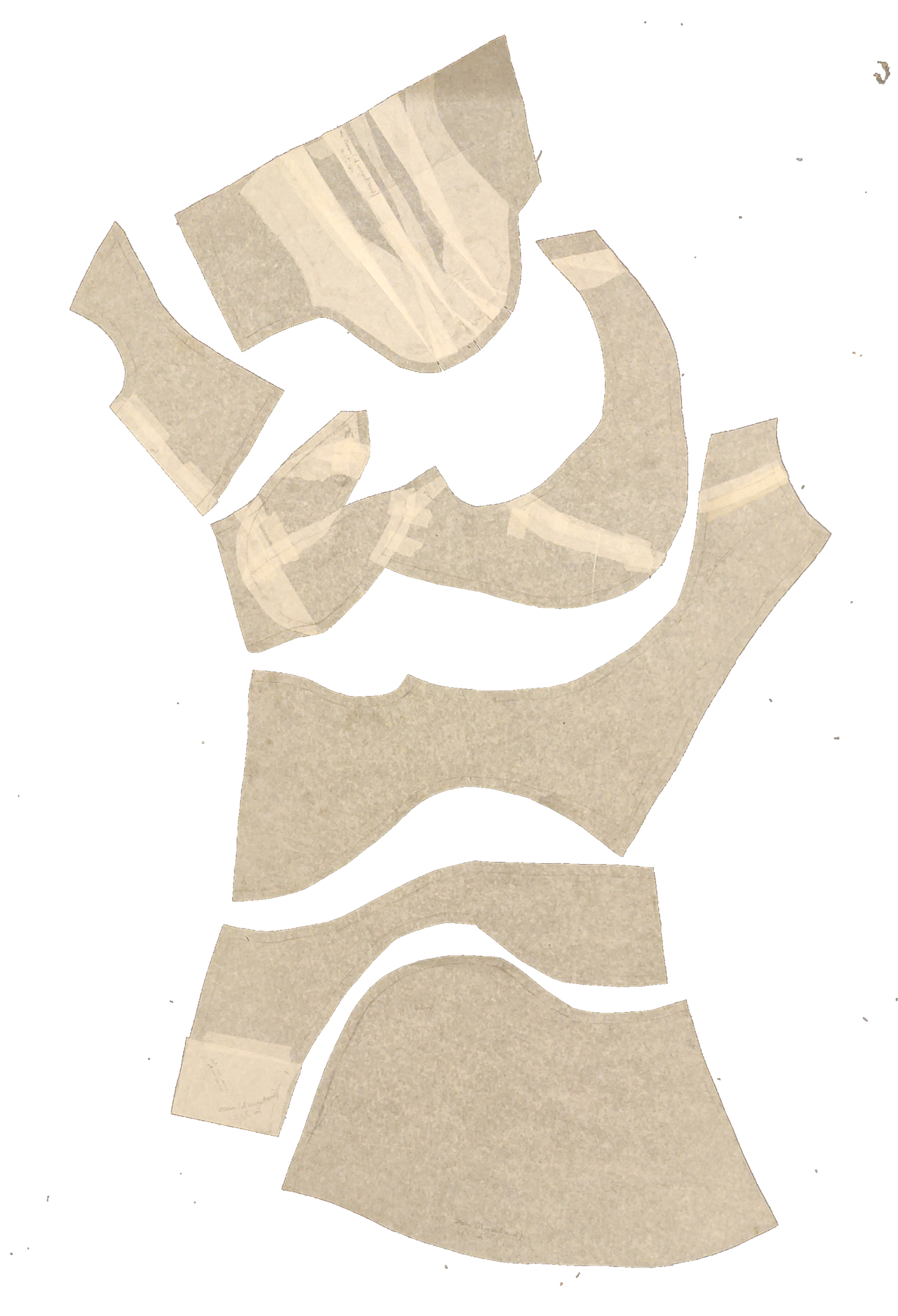
Translating the anatomical pattern into a pattern for a T-shirt 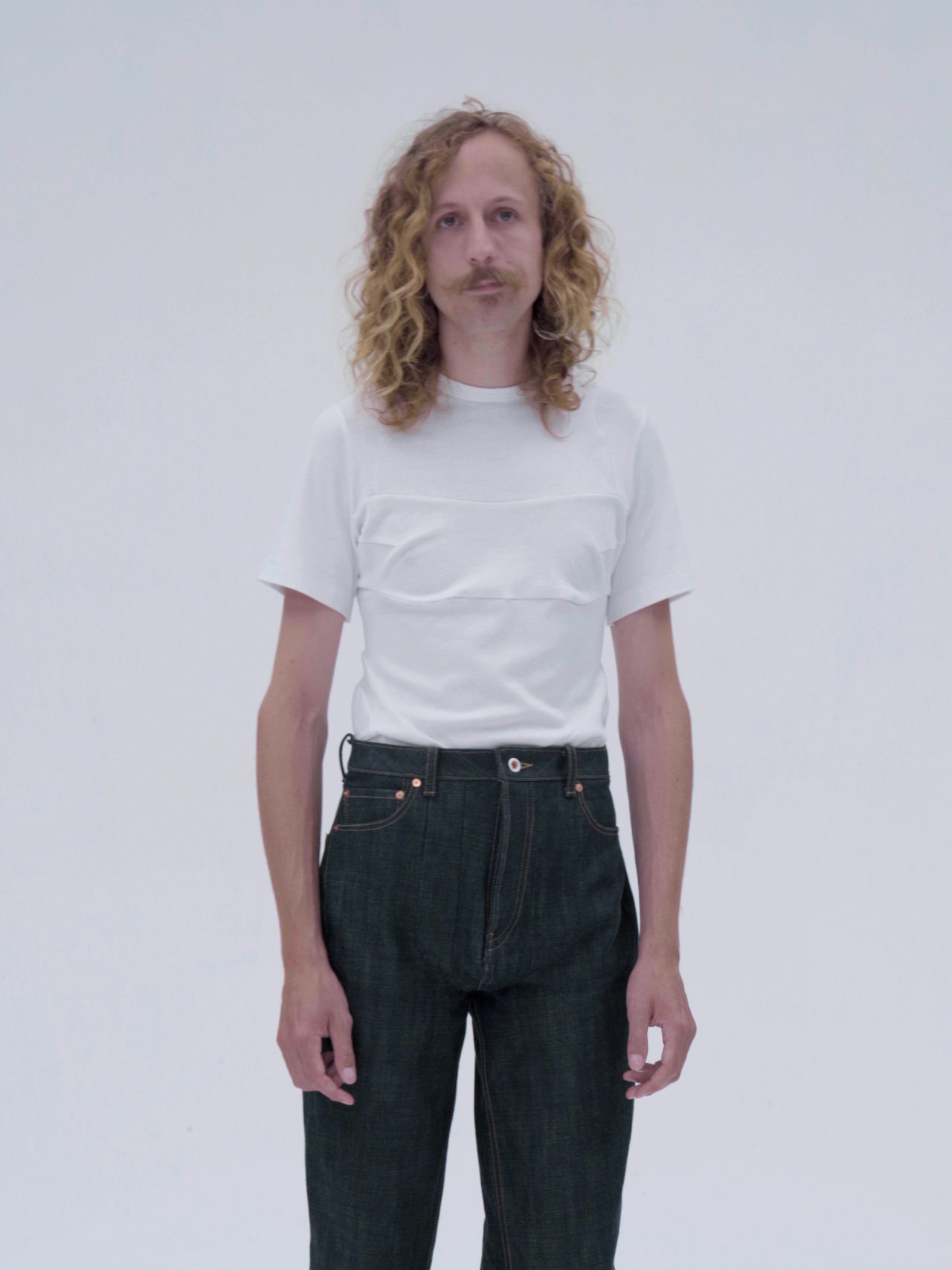
Blouse

Taking a mould of the body 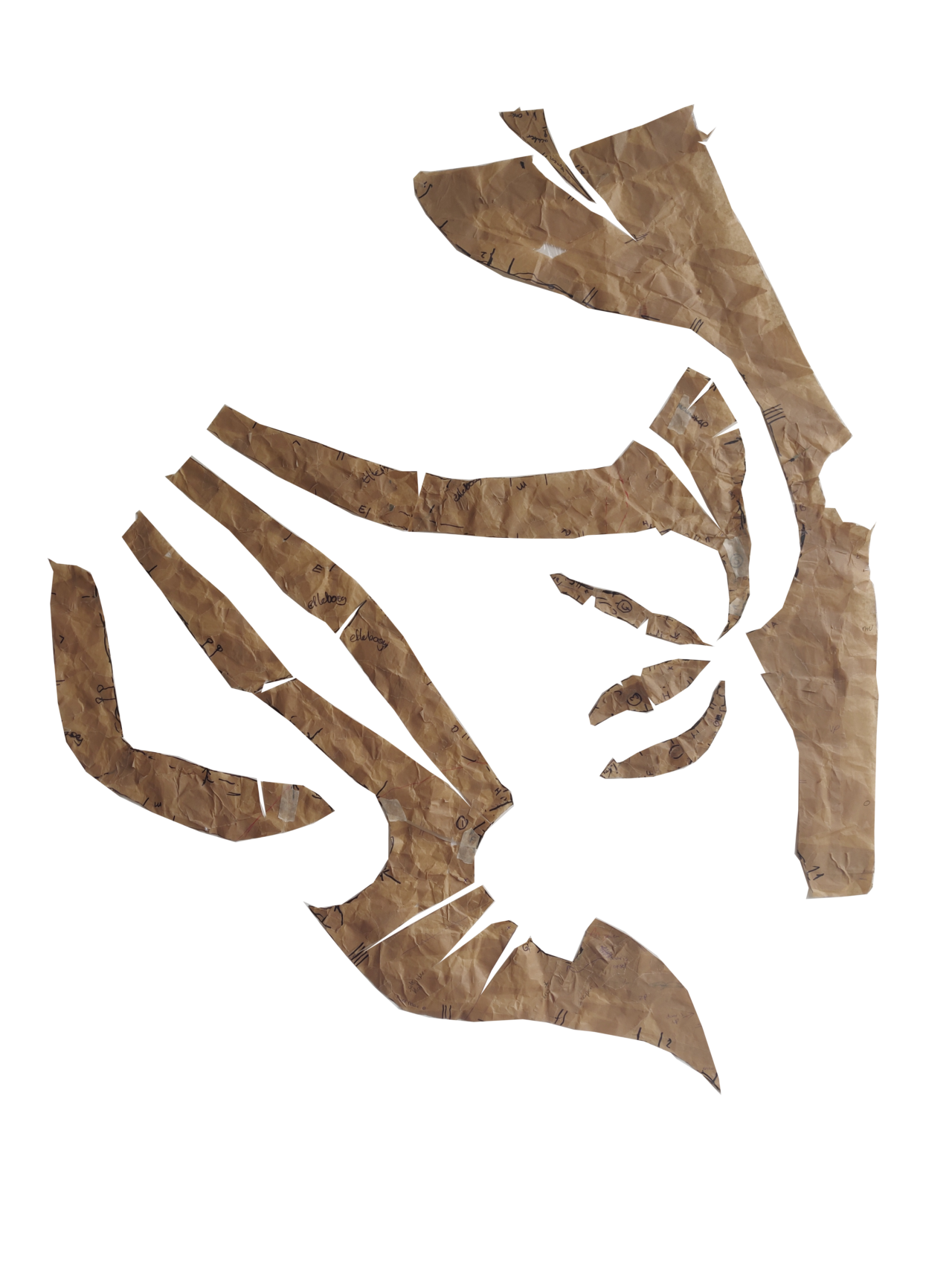
Unfolding the body 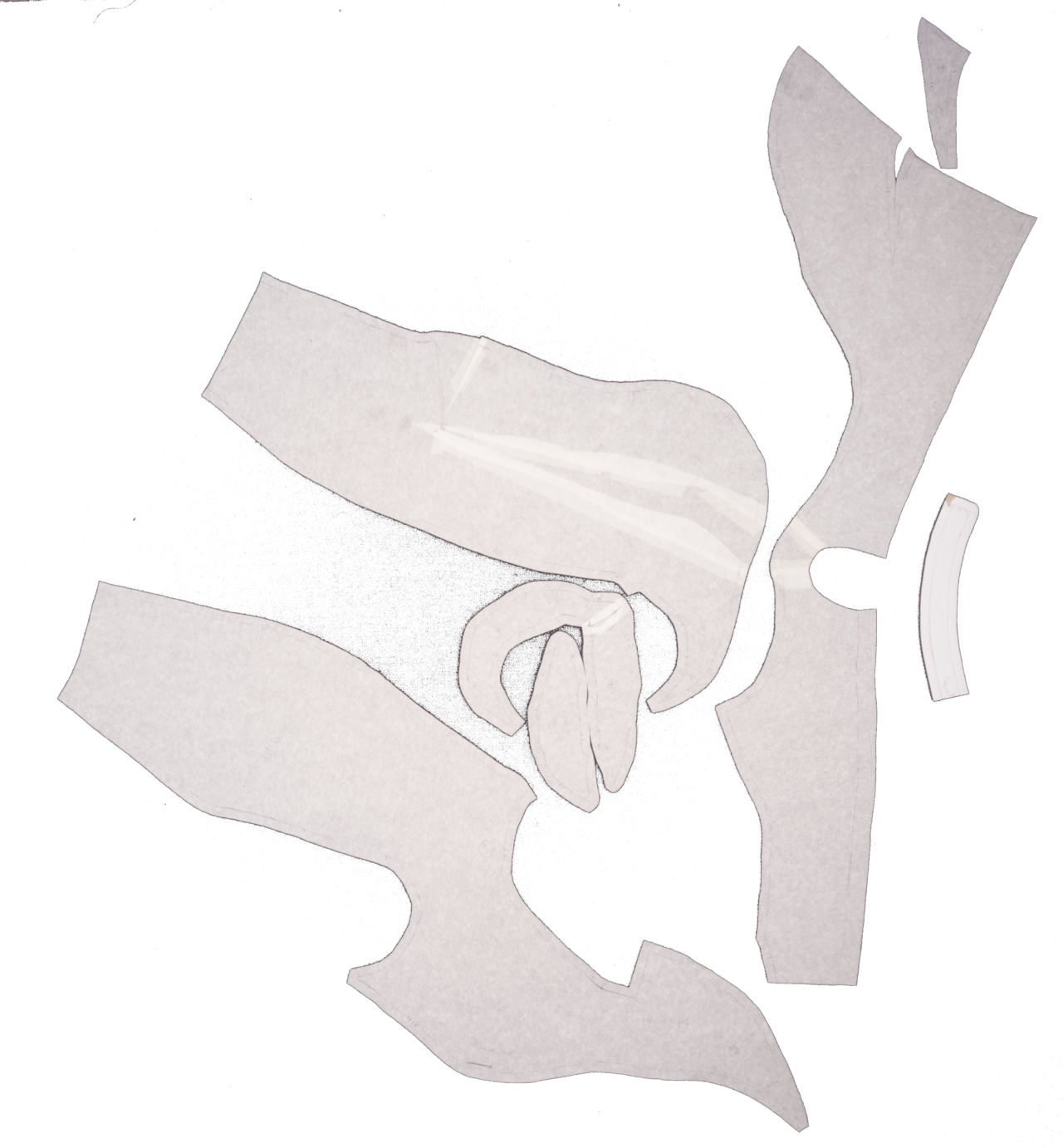
Translating the anatomical pattern into a pattern for a blouse 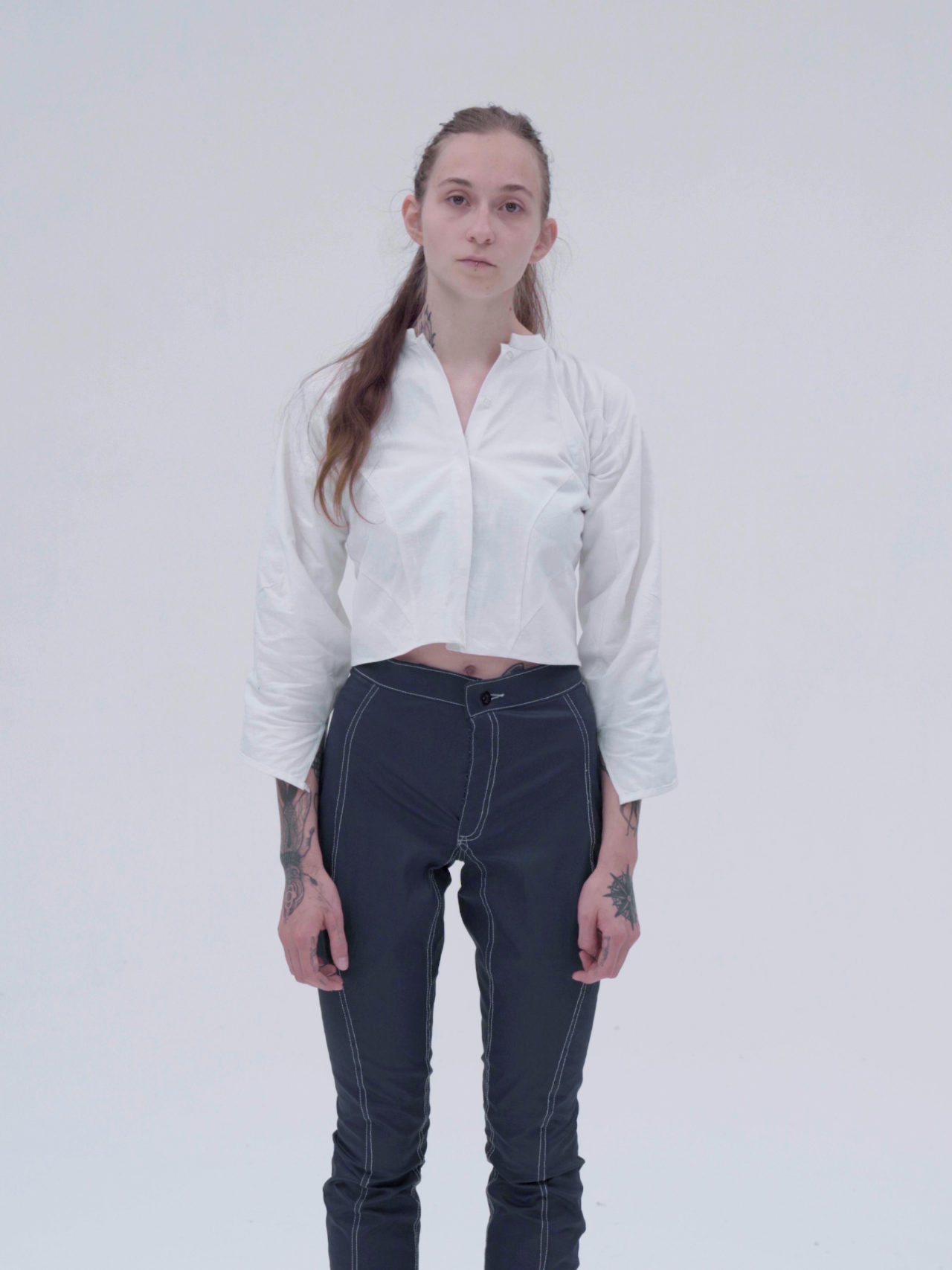
Denim Jacket

Taking a mould of the body 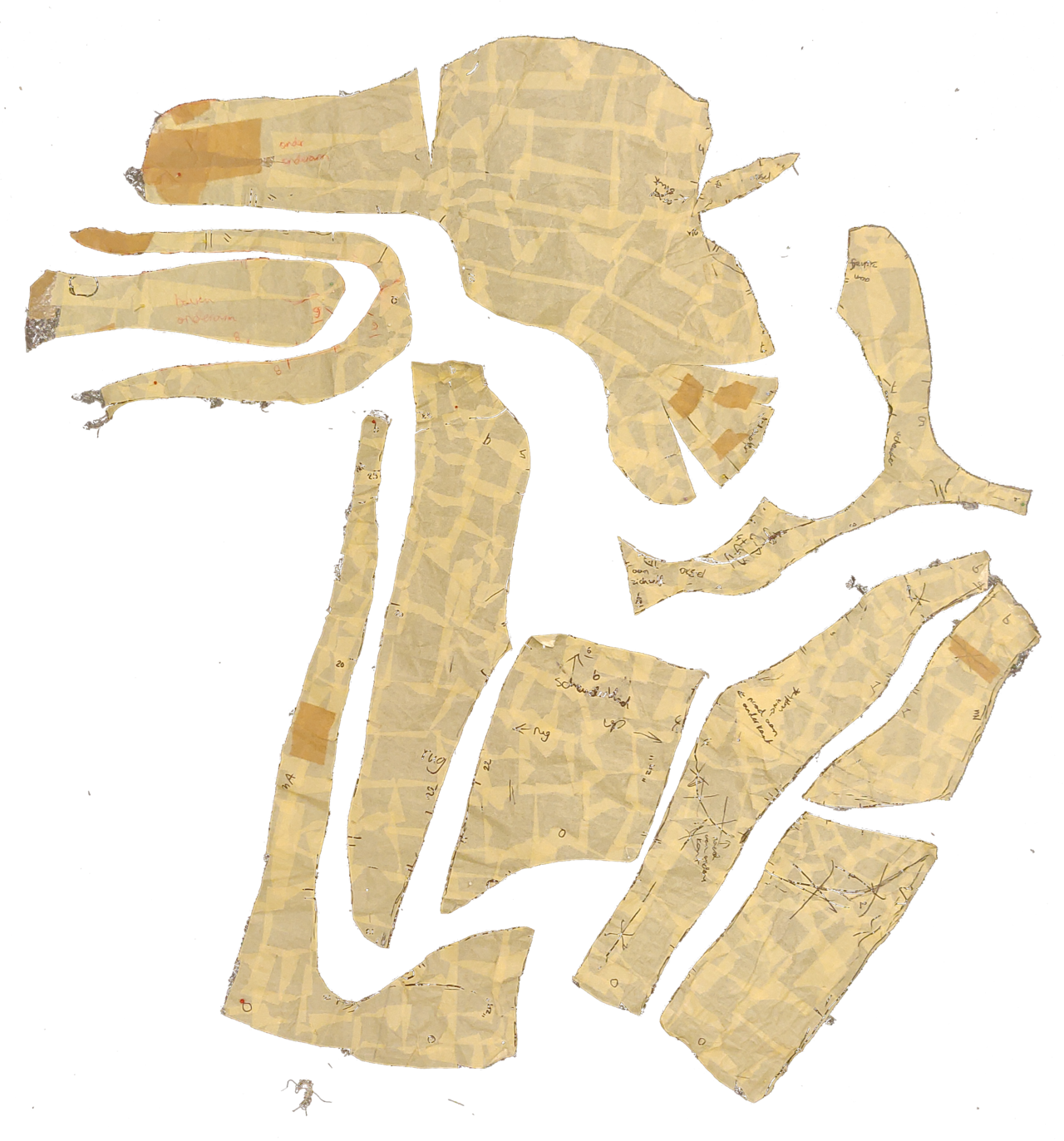
Unfolding the body 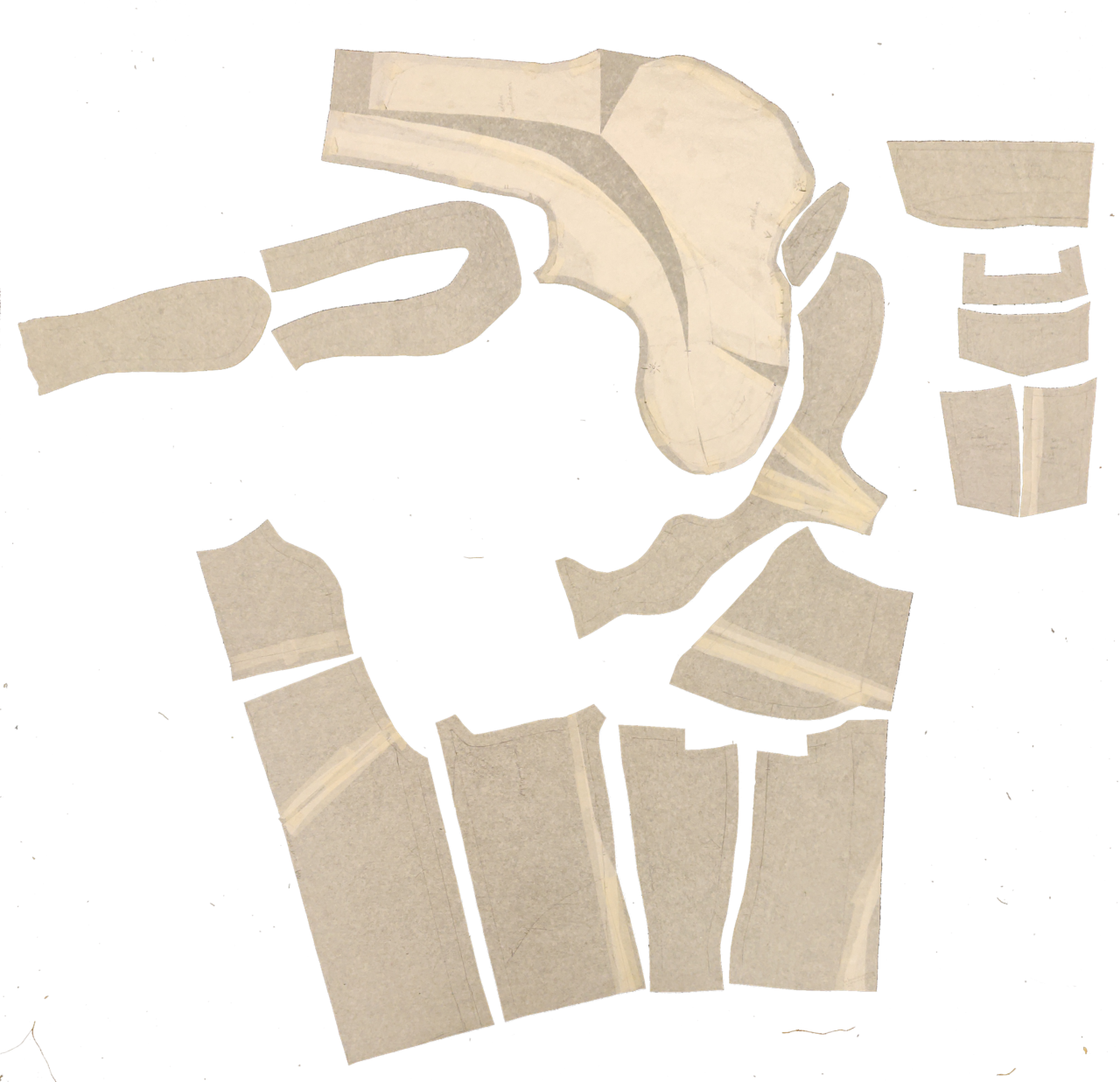
Translating the anatomical pattern into a pattern for a denim jacket 
5 Pocket Jeans

Taking a mould of the body 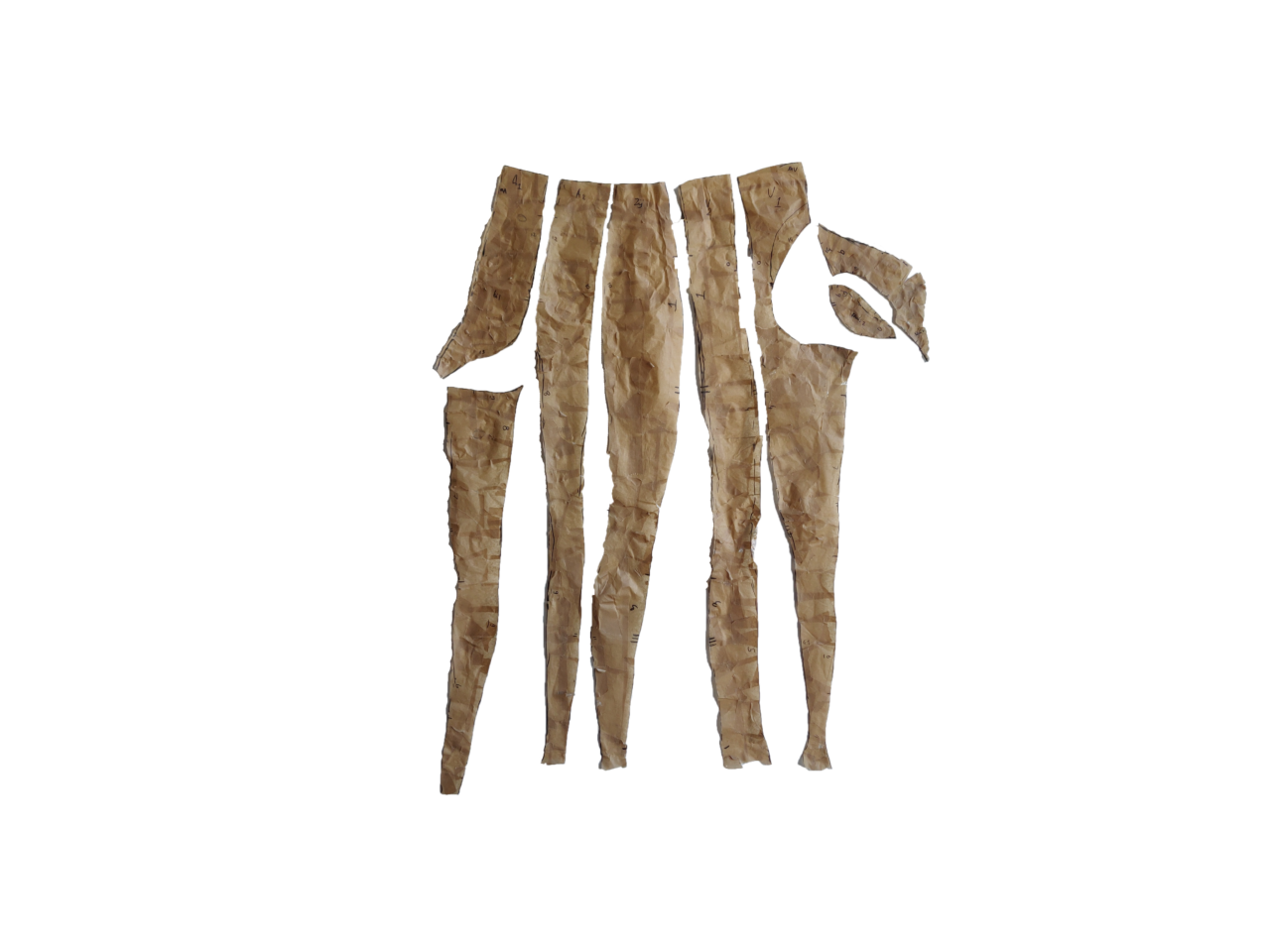
Unfolding the body 
Translating the anatomical pattern into a pattern for 5 pocket jeans 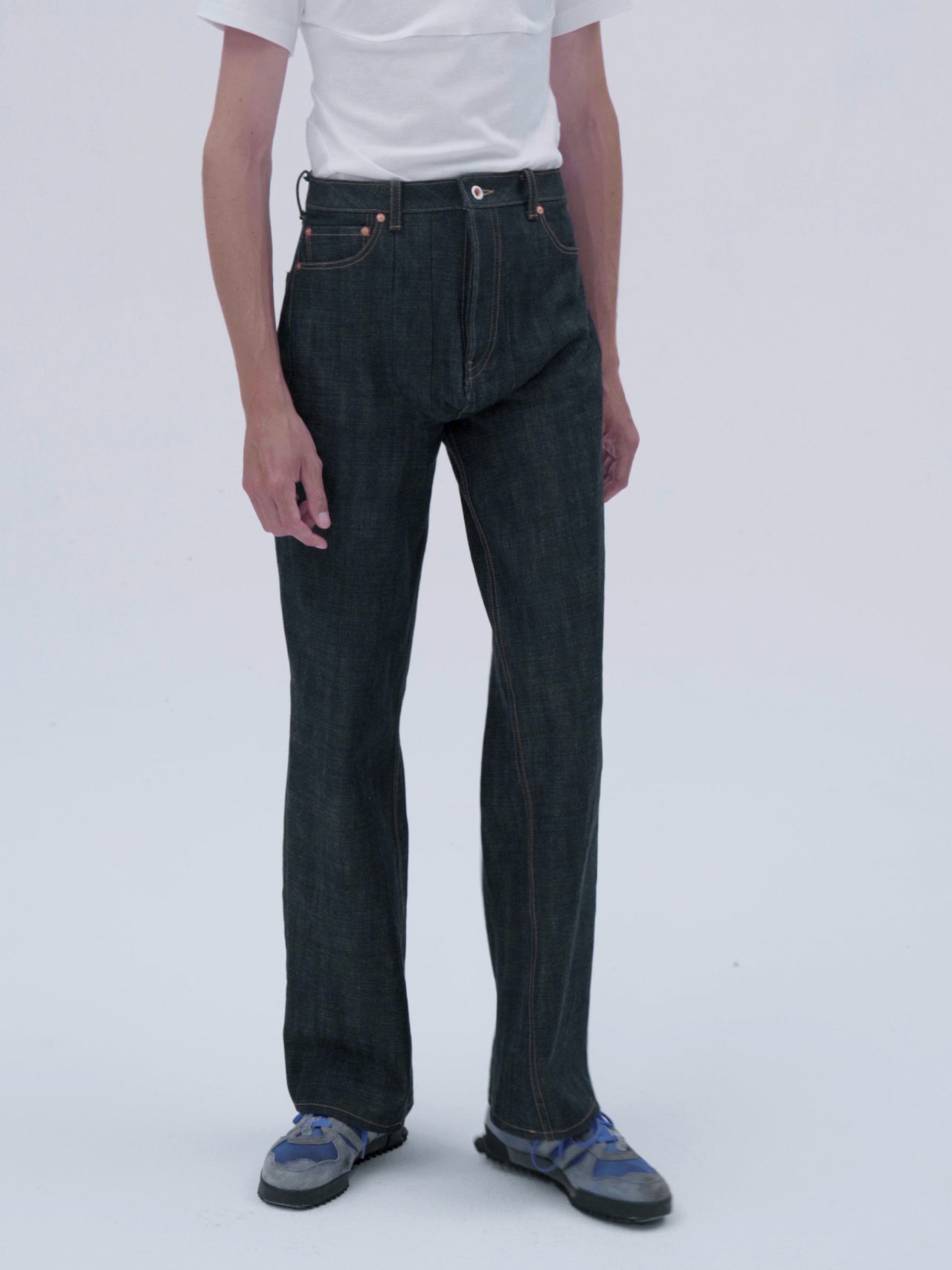
Little Black Dress
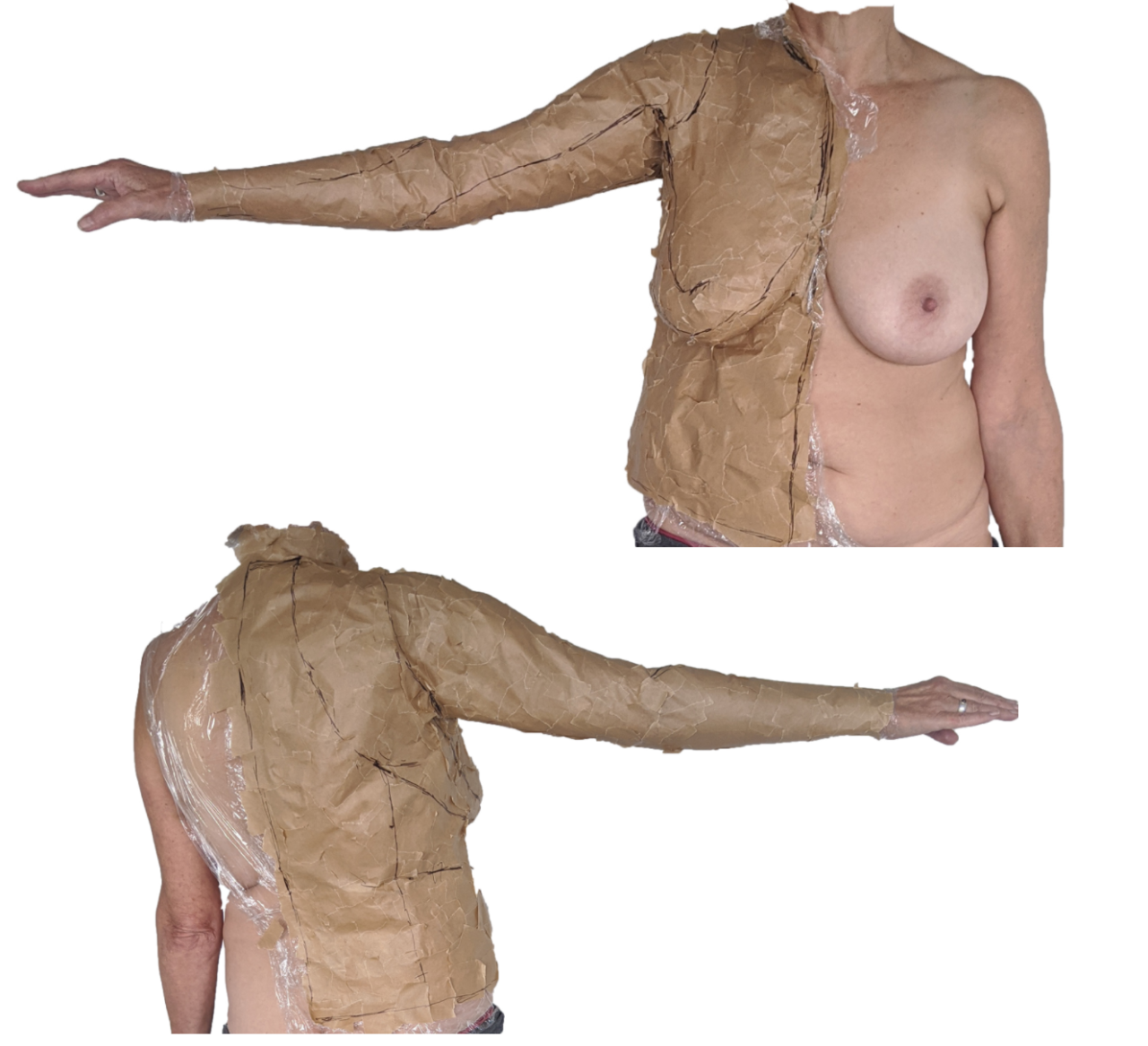
Taking a mould of the body 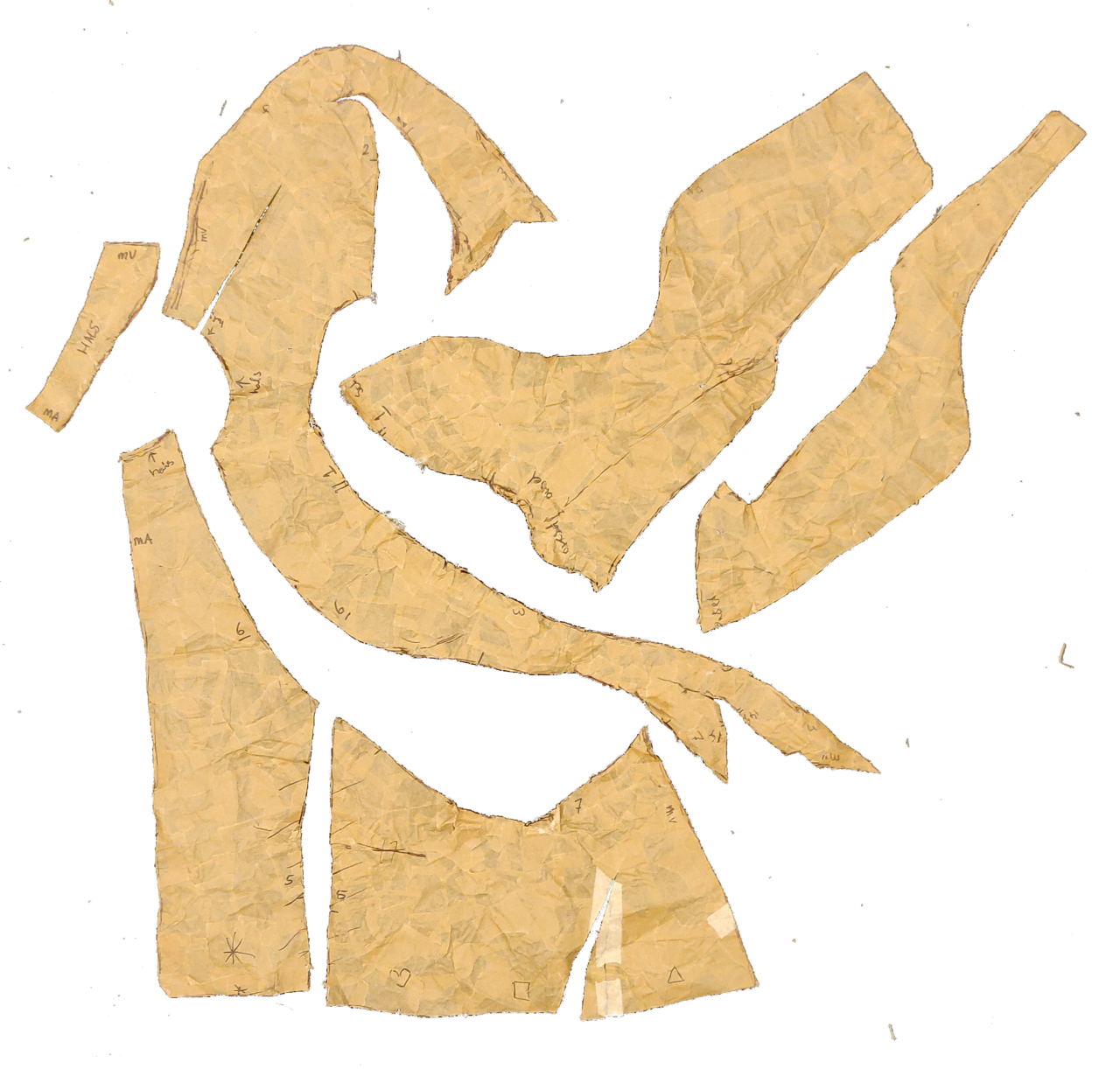
Unfolding the body 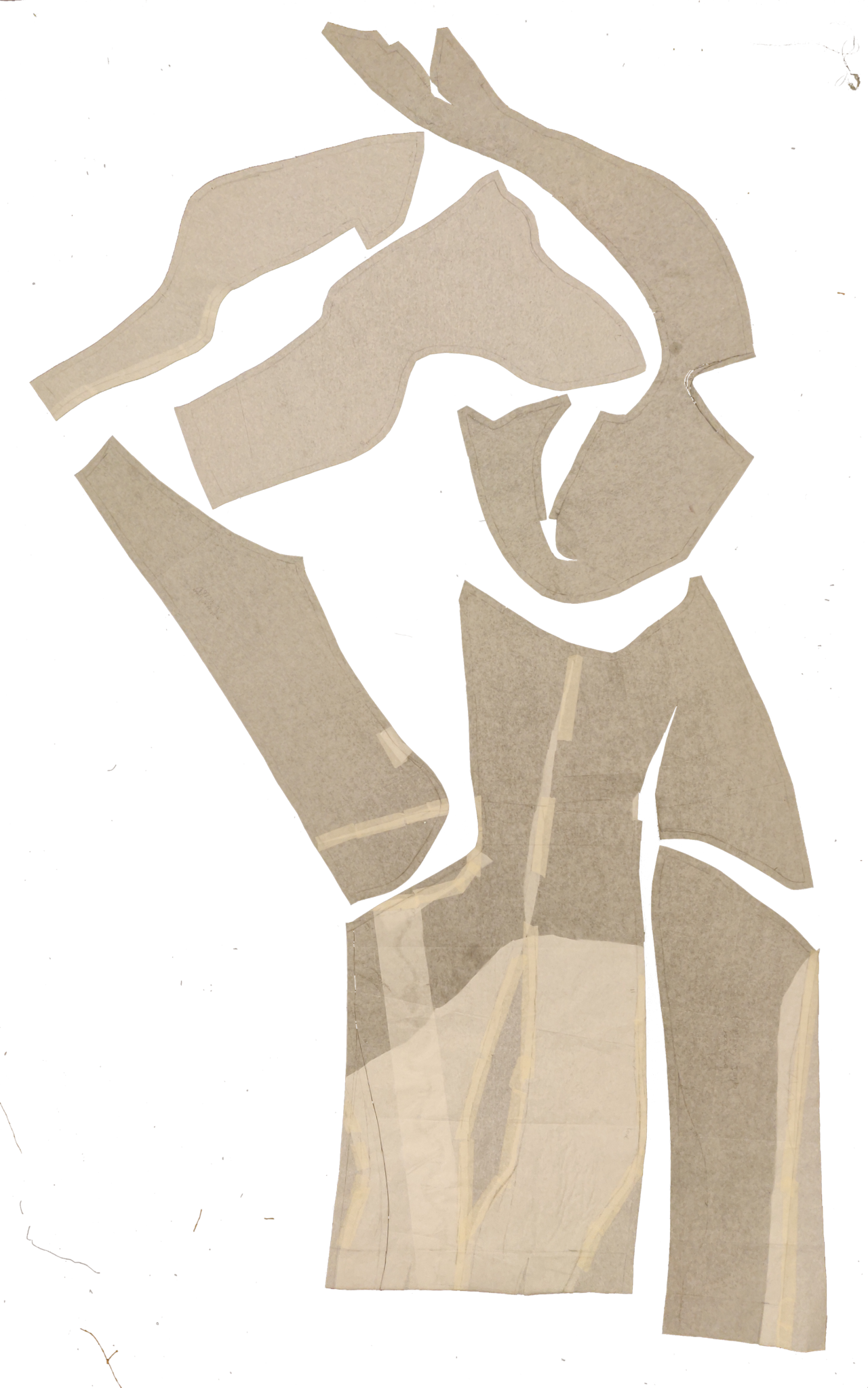
Translating the anatomical pattern into a pattern for a traditional Little Black Dress 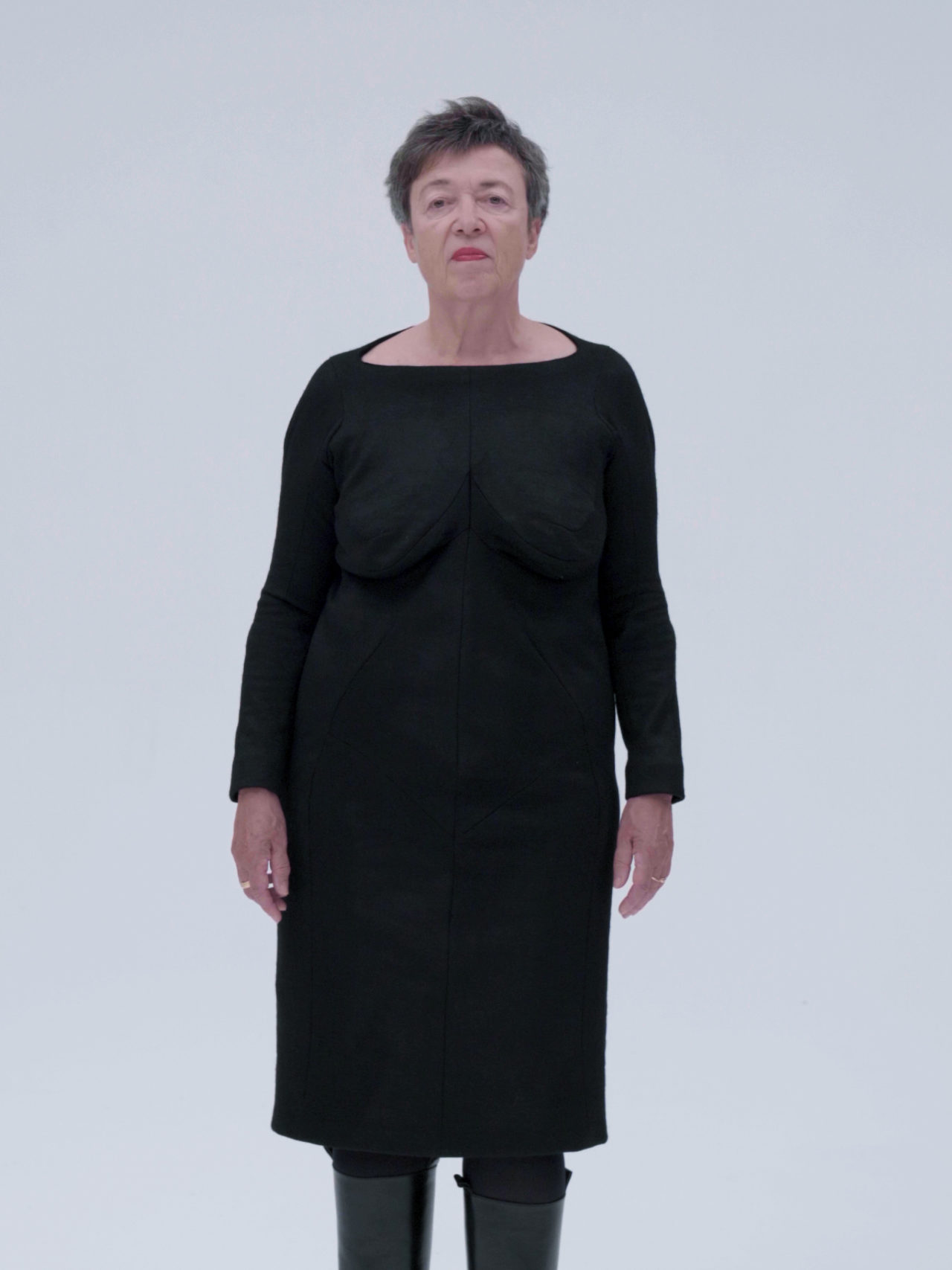
Pencil Skirt
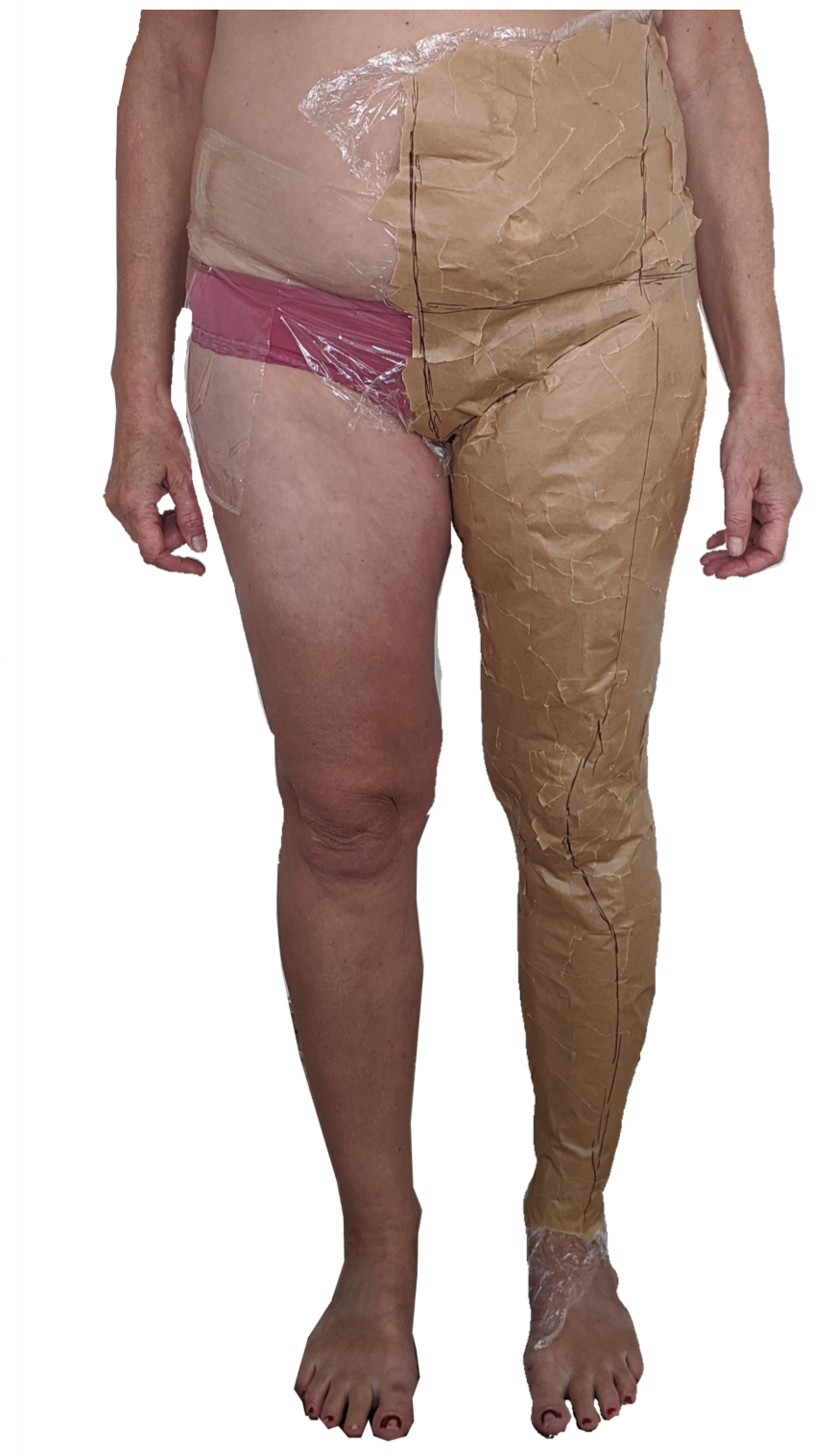
Taking a mould of the body 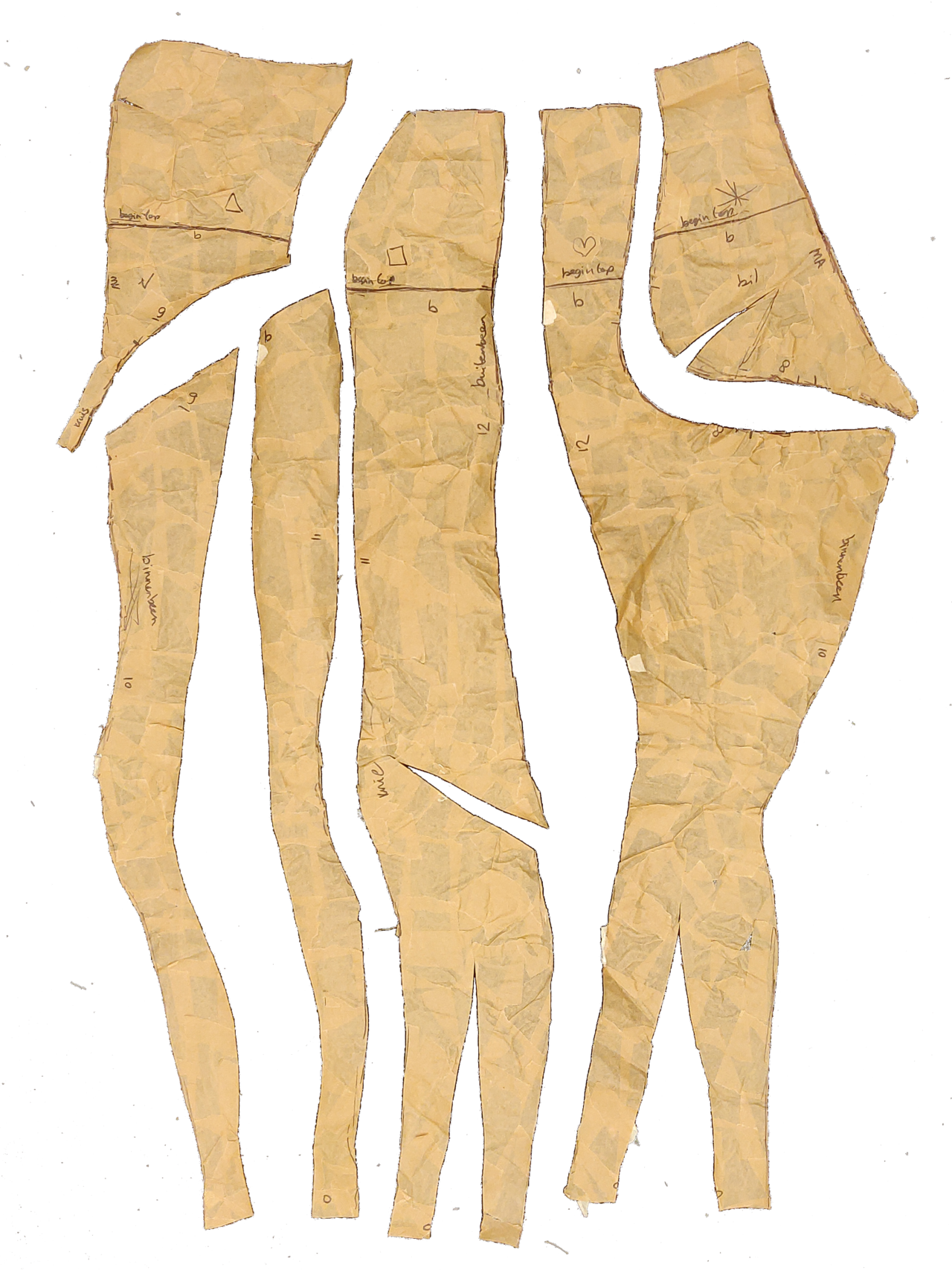
Unfolding the body 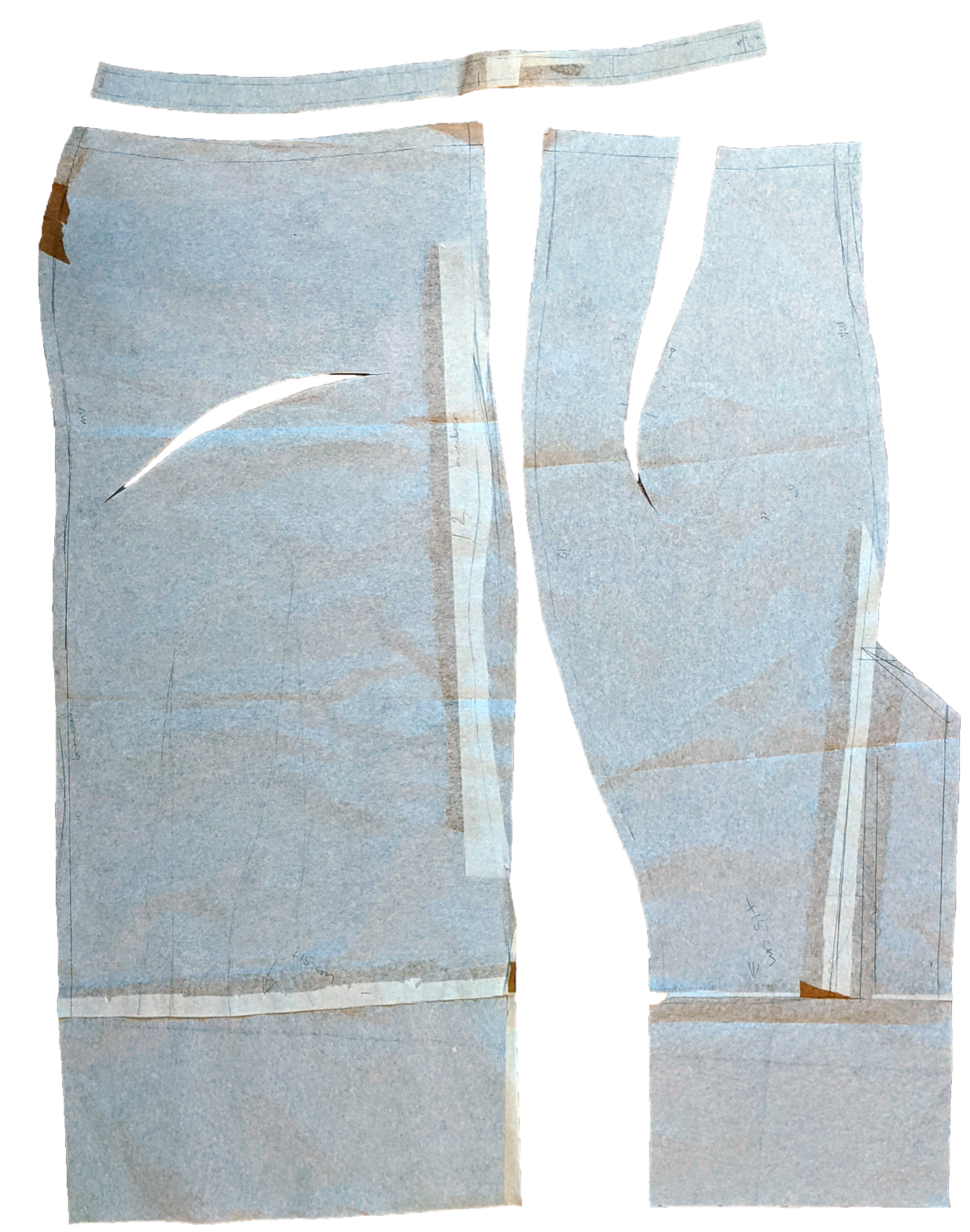
Translating the anatomical pattern into a pattern for a pencil skirt 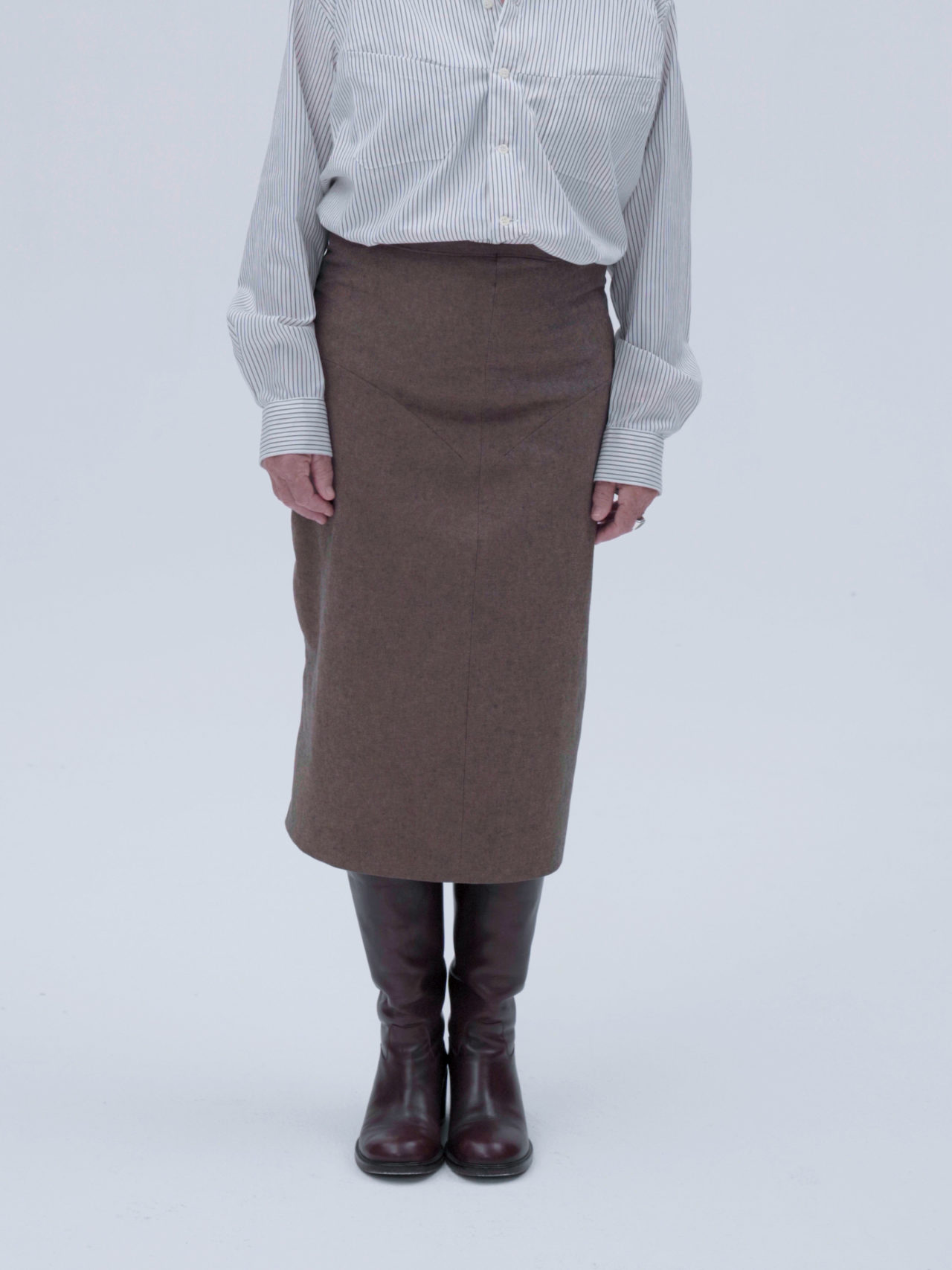
Shirt
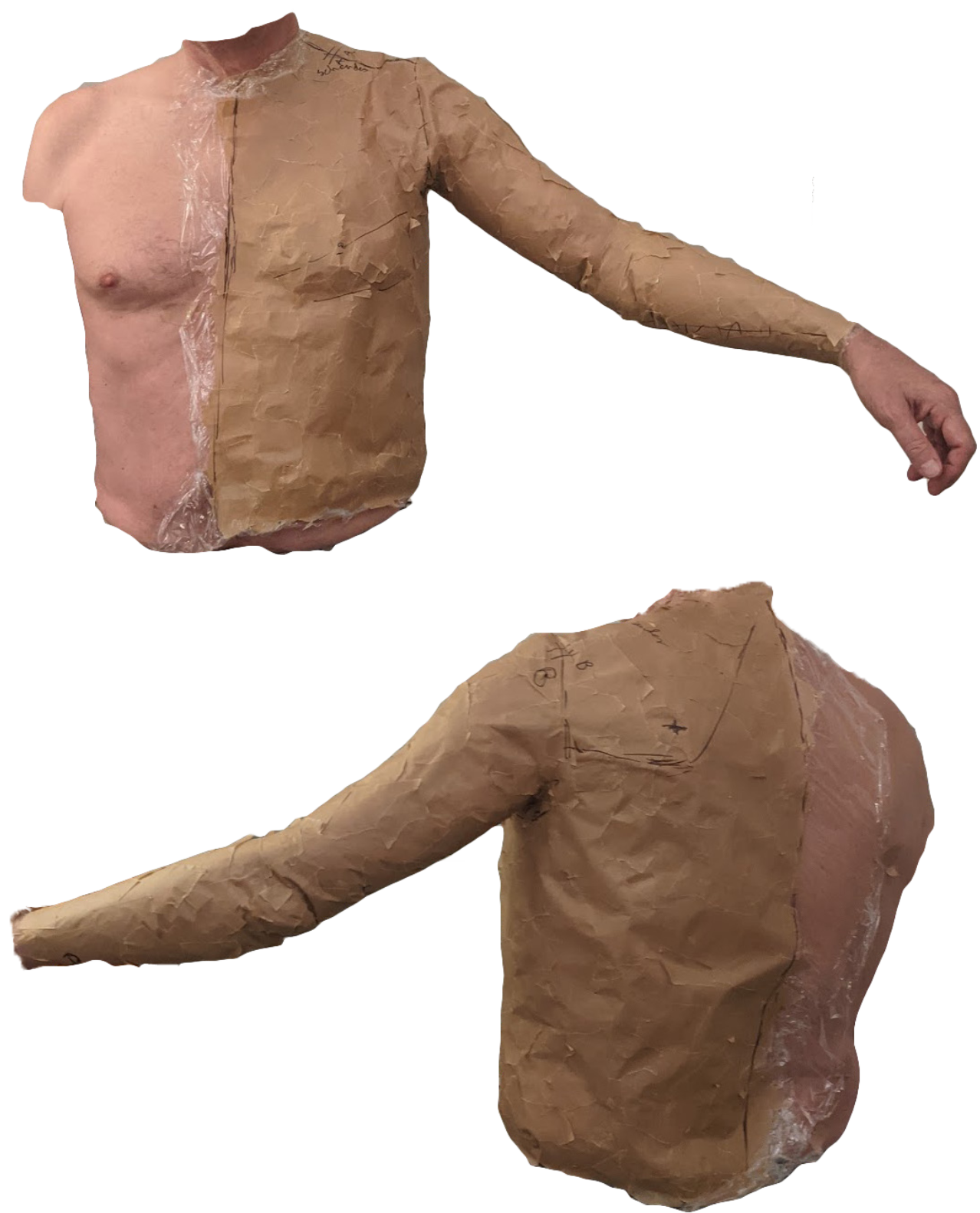
Taking a mould of the body 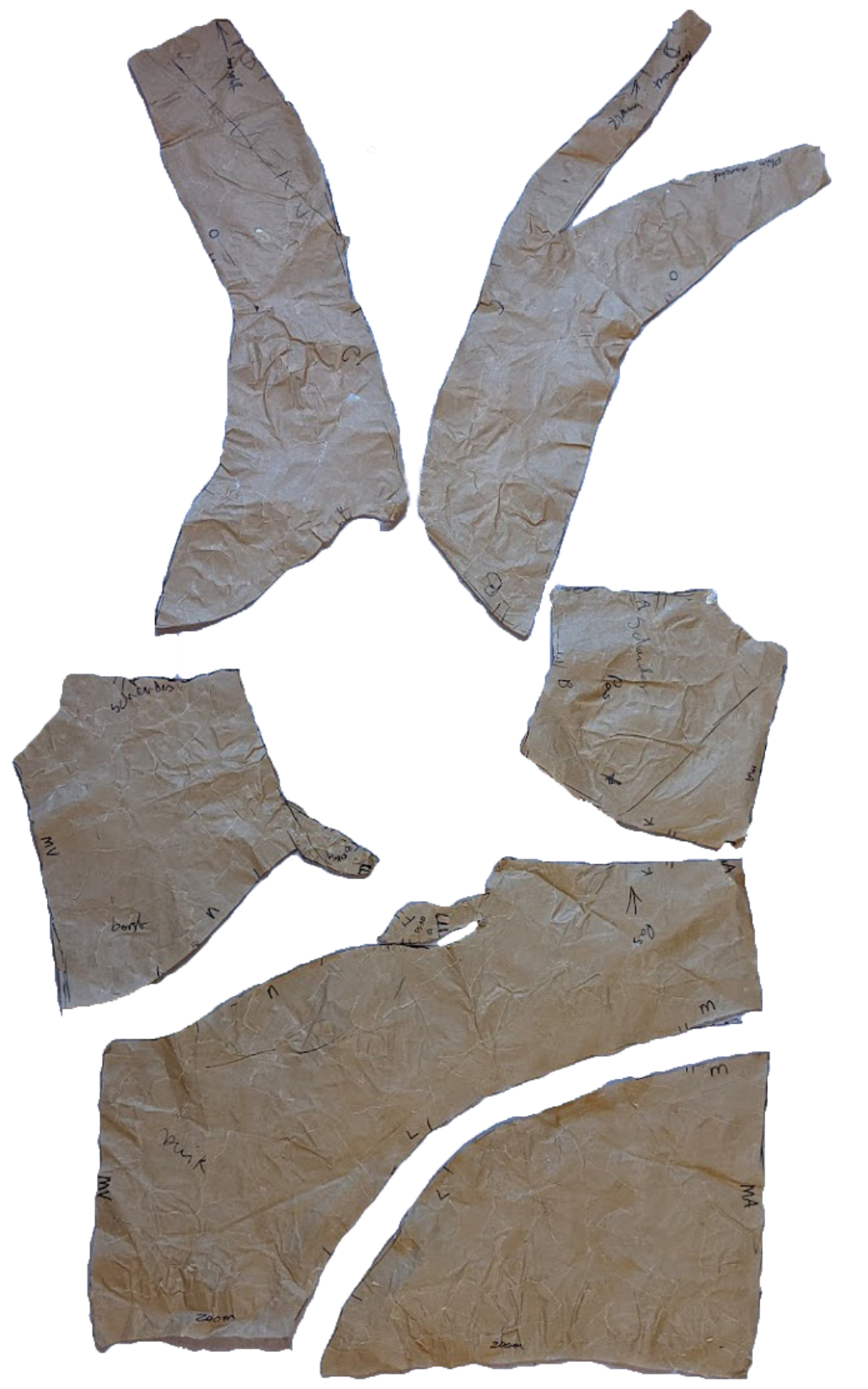
Unfolding the body 
Translating the anatomical pattern into a pattern for a shirt 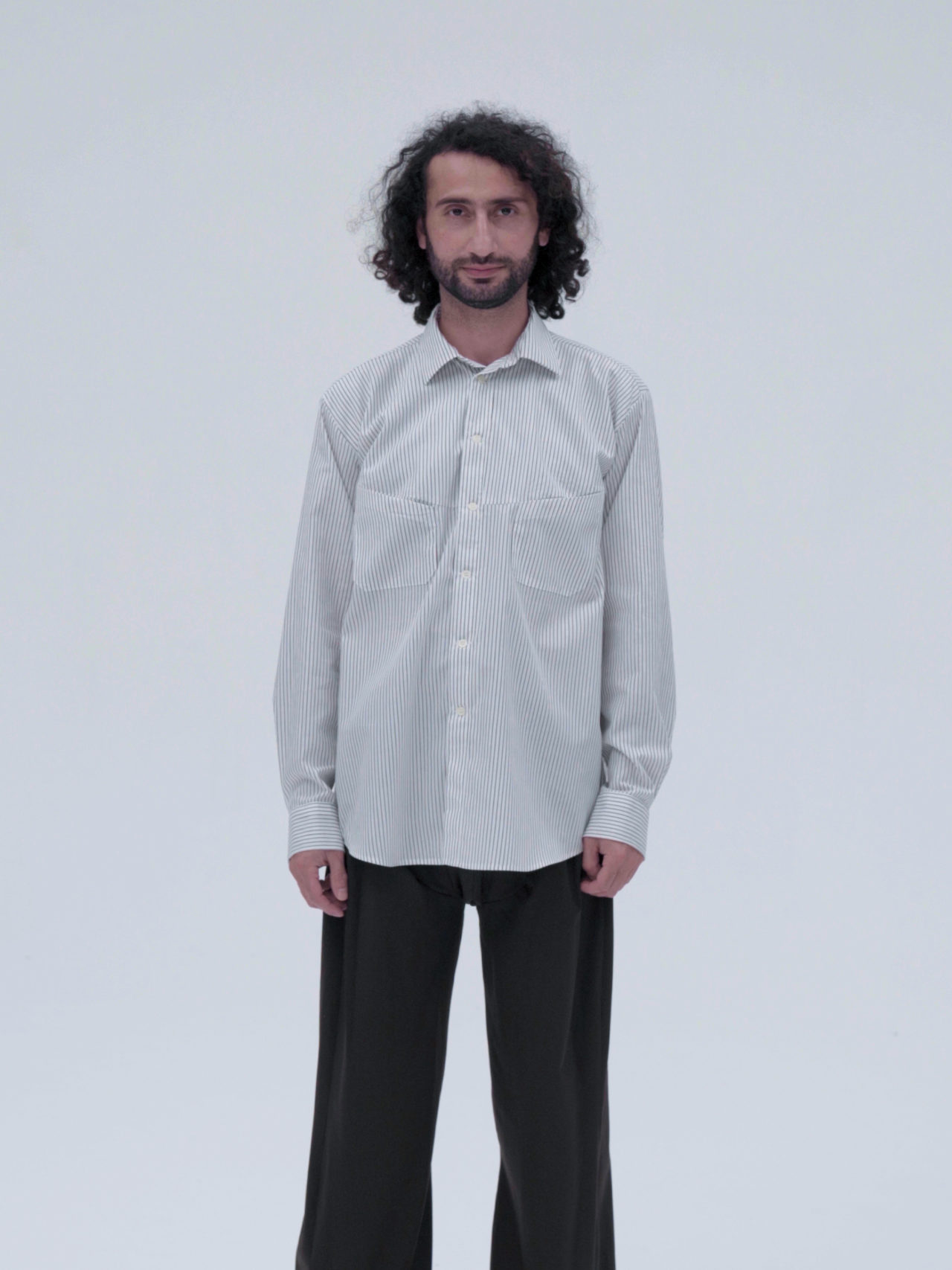
Skinny Jeans
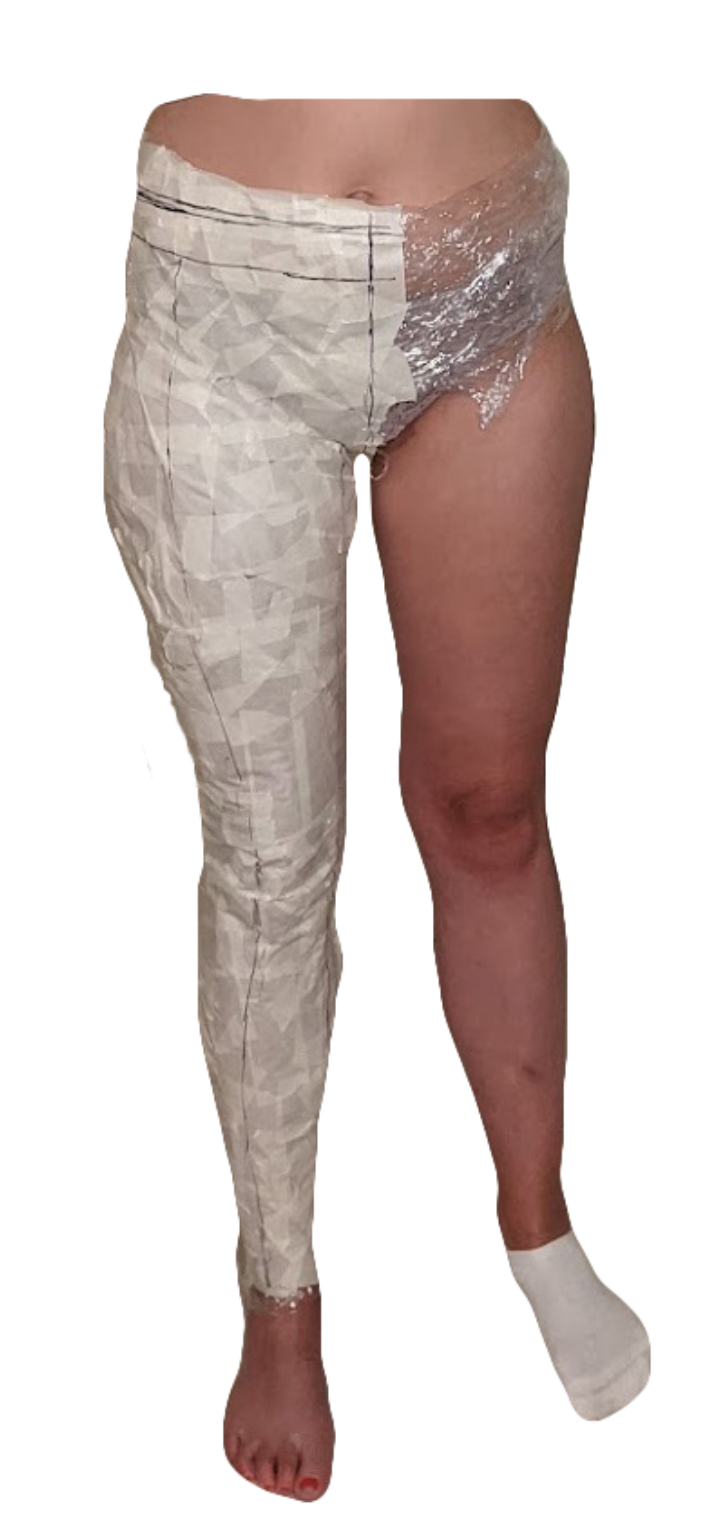
Taking a mould of the body 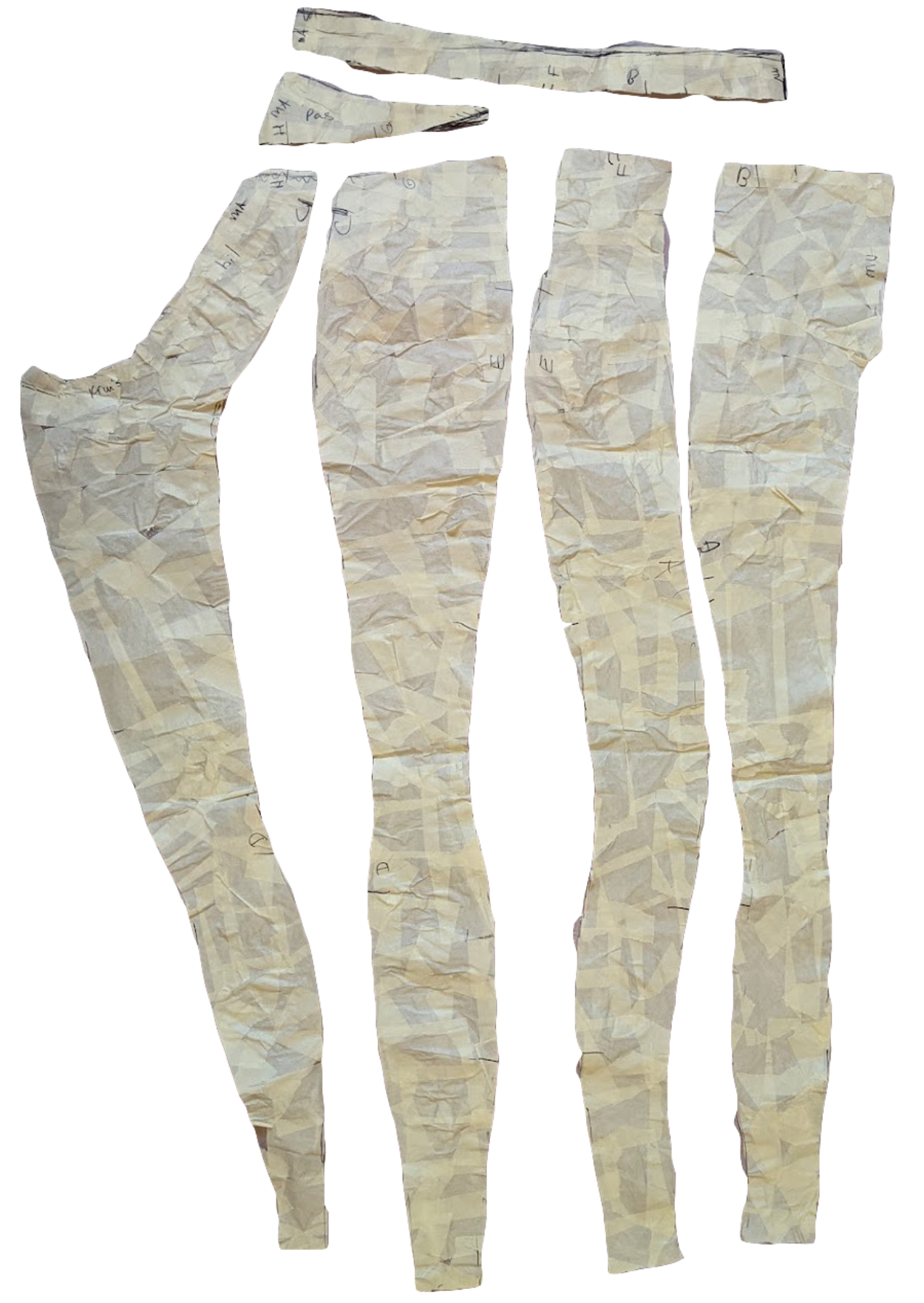
Unfolding the body 
Translating the anatomical pattern into a pattern for skinny jenas 
Denim Button Down Skirt
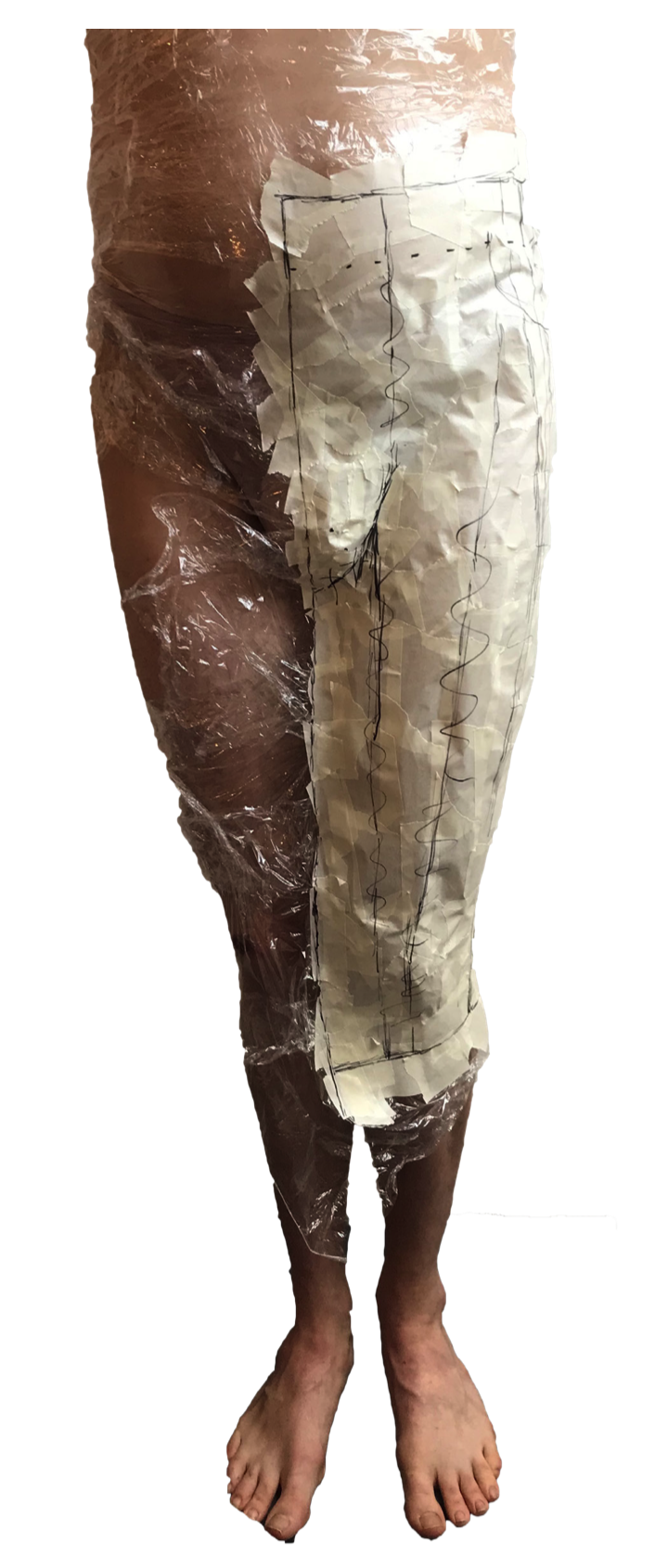
Taking a mould of the body 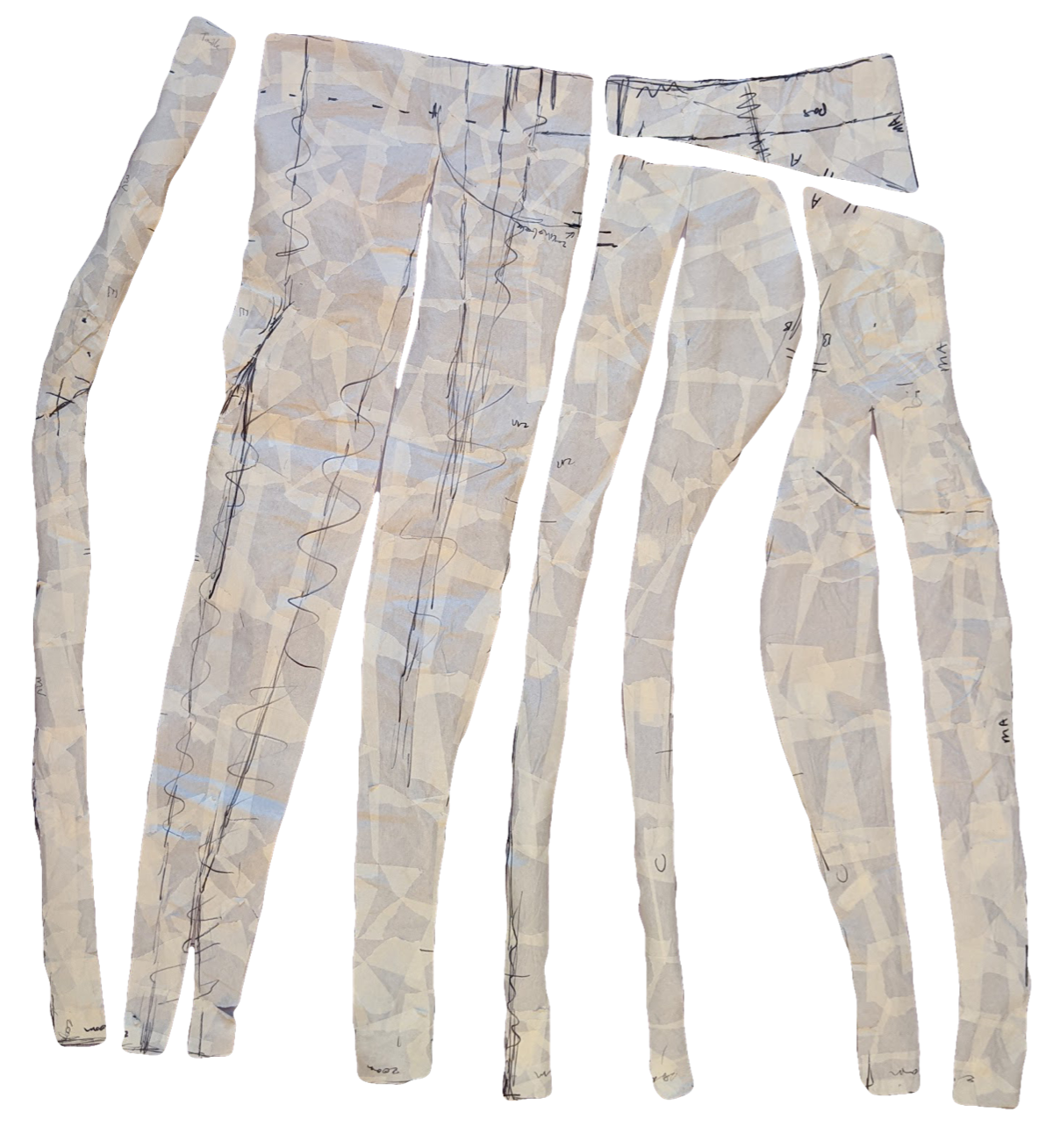
Unfolding the body 
Translating the anatomical pattern into a pattern for a denim button down skirt 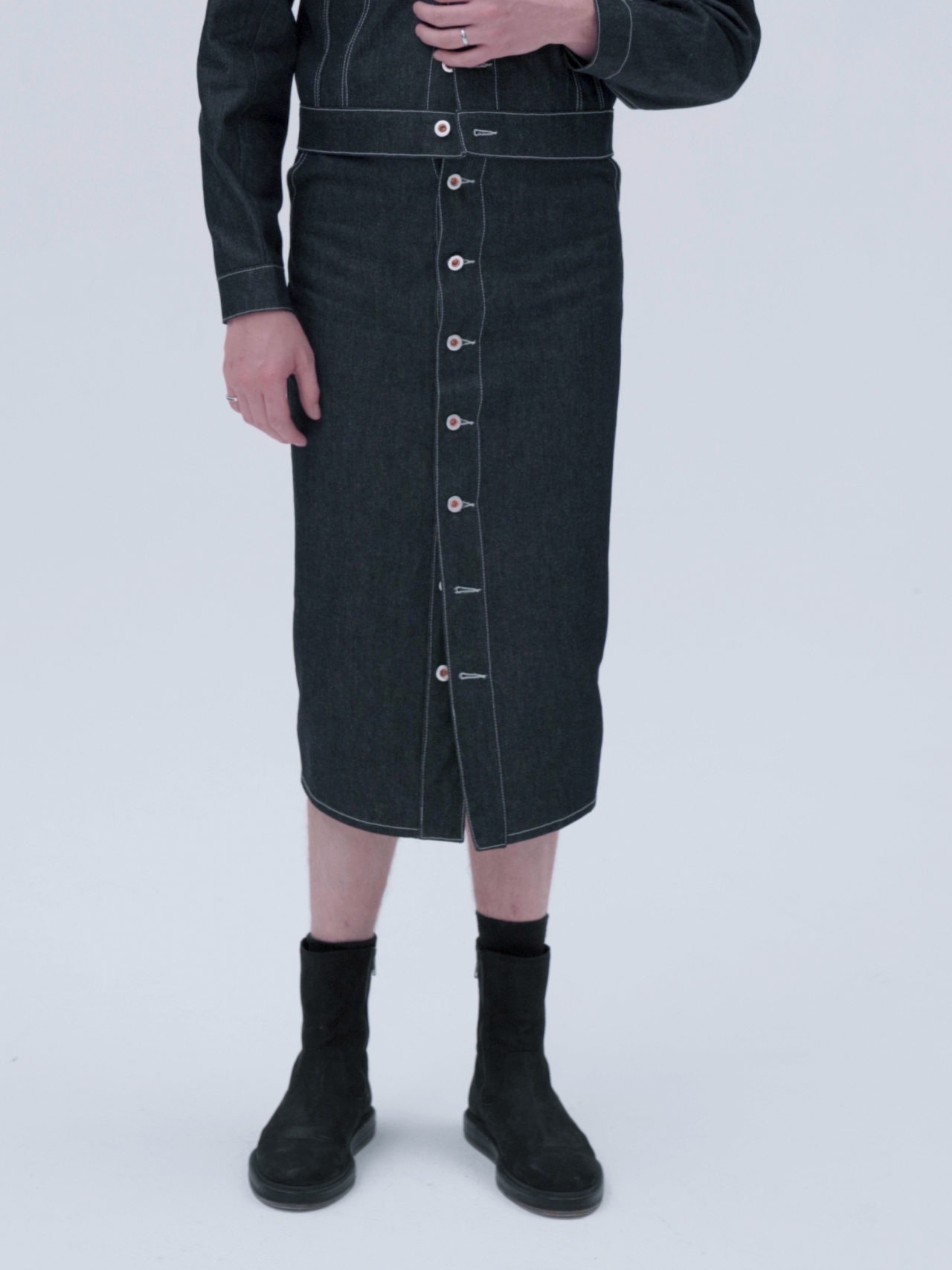
Why does it matter?
In itself a model is not problematic, but there are some dangers in the abstraction of the world. When the way we come to understand things is not based on their actual presence but on a pre-defined definition of them, we are in danger of losing a wealth of nuance, diversity, complexity and dimension. In dressing the body, an abstracted version of it can never replace the real thing. We should never lose track of the physical body.
